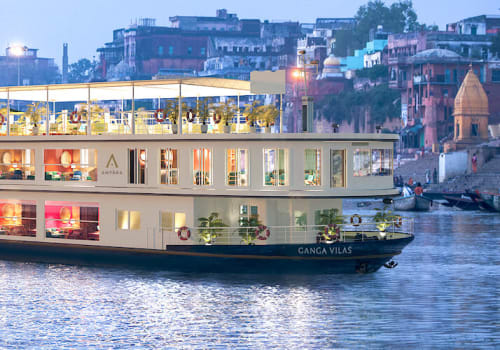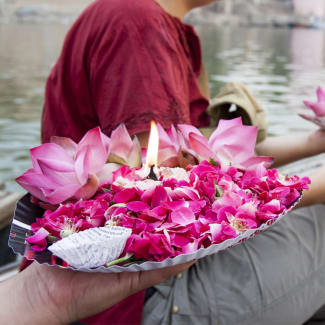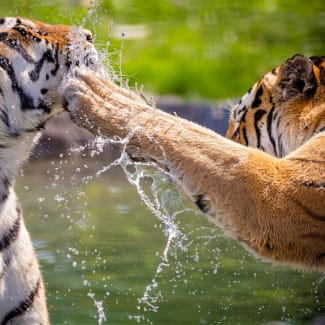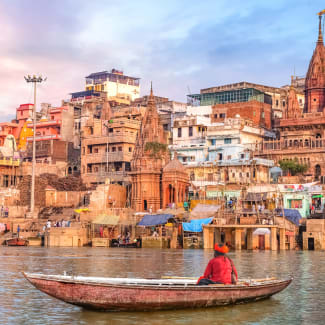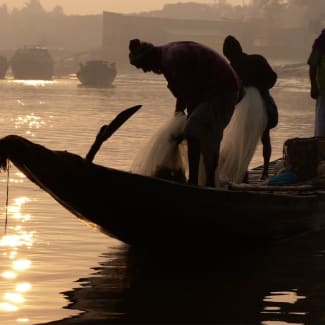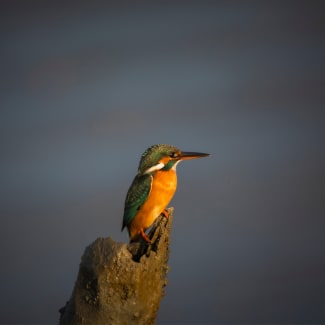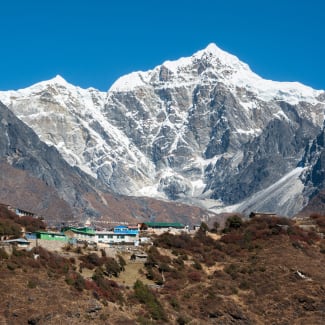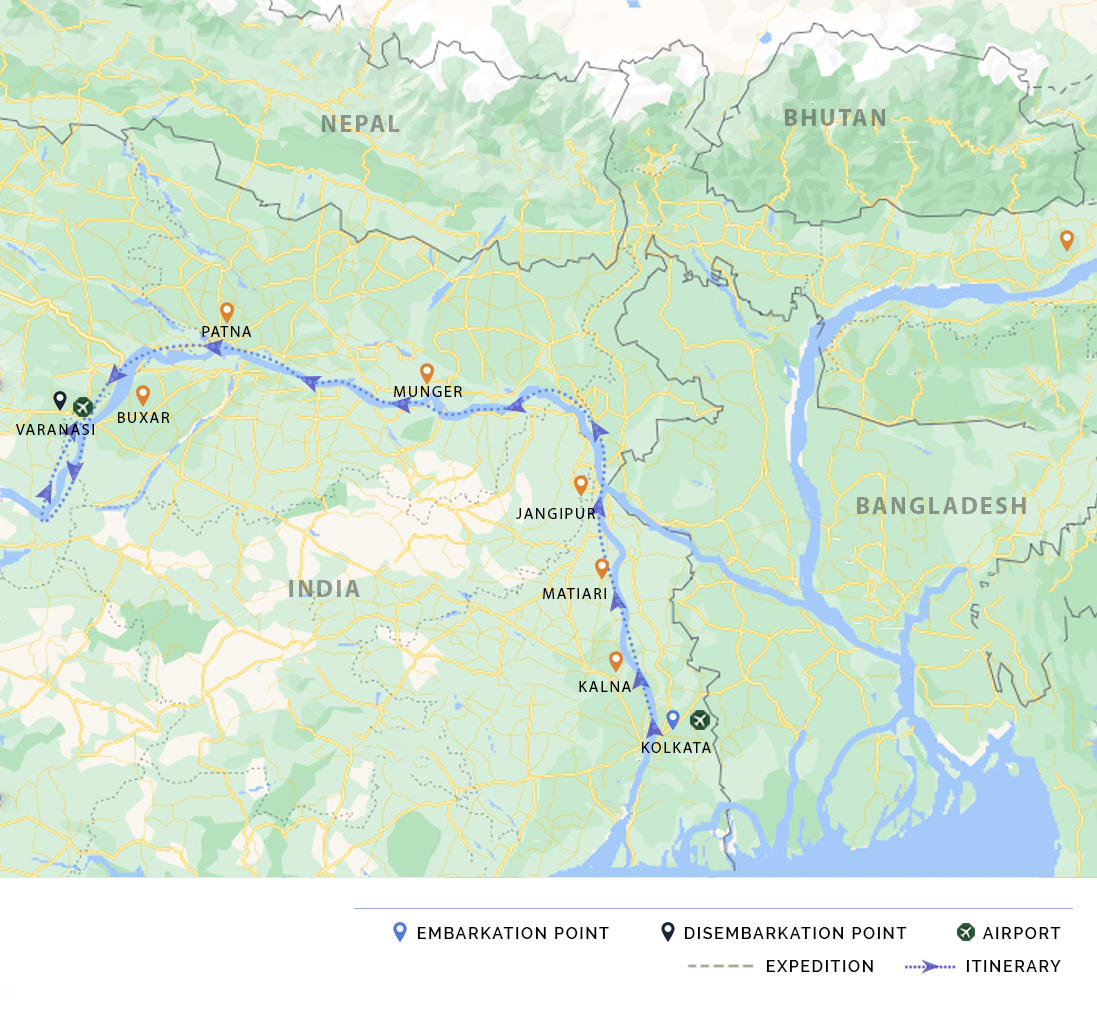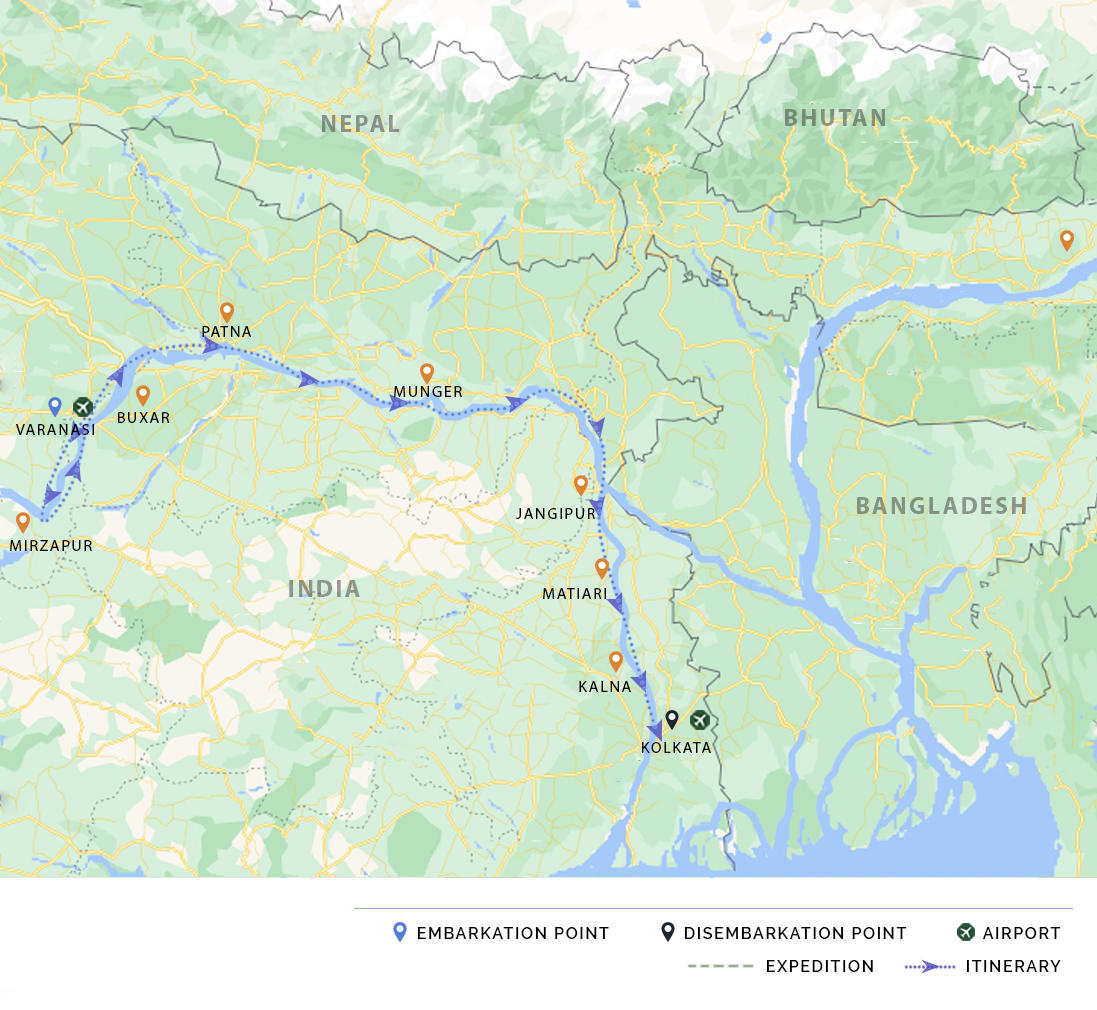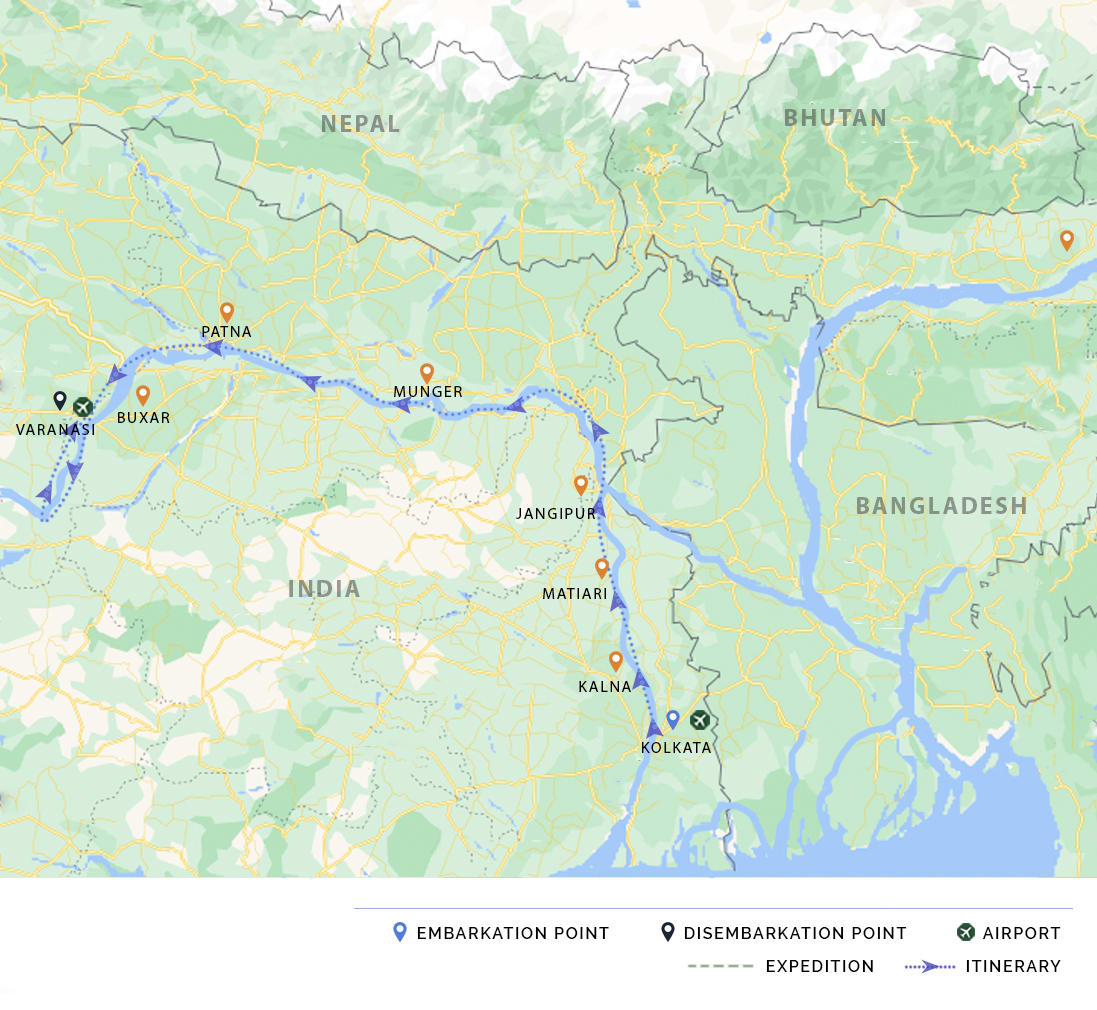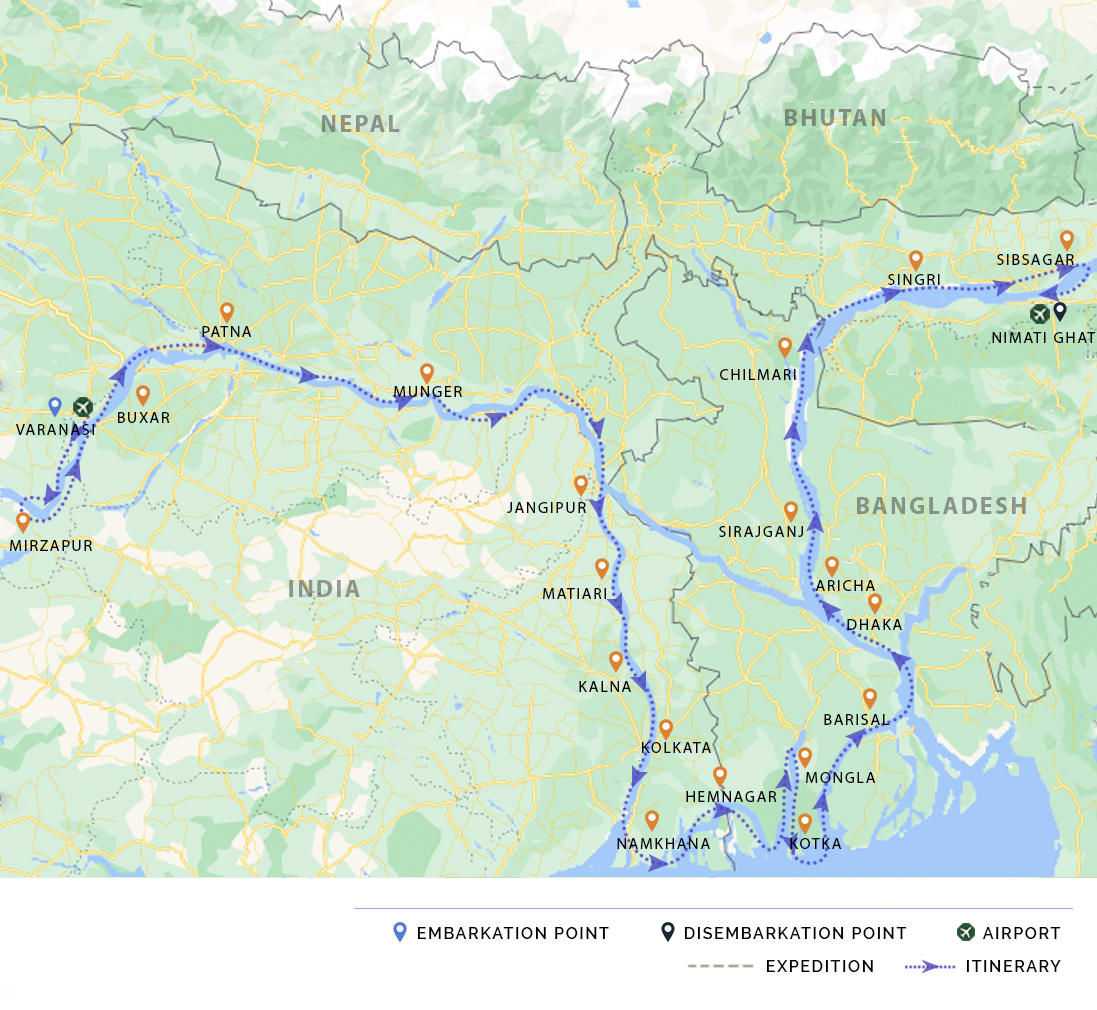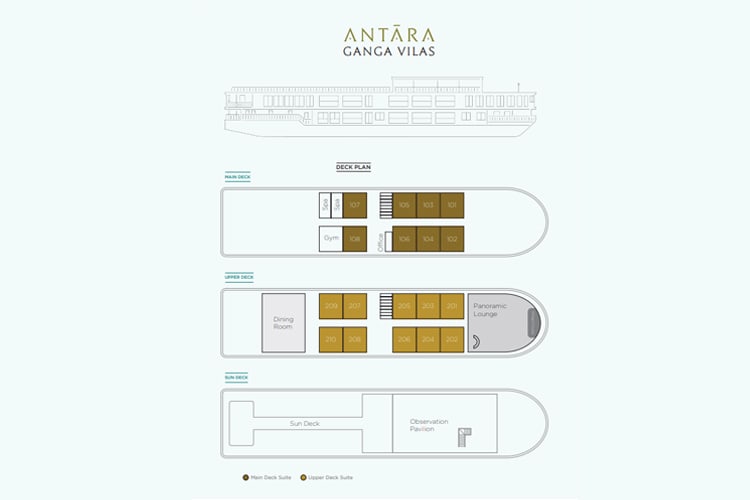Overview
Built in 2022, the luxurious, 18-suite Ganga Vilas is a state-of-the-art, handcrafted riverboat offering guests unparalleled comfort in the region and pioneering exploration of the Indian Subcontinent’s seldom-sailed waterways.
Her itineraries include the longest river cruise in the world, a unique voyage spanning the course of 27 rivers and a distance of some 3200 km (nearly 2000 miles) across India and Bangladesh. Exploring the wonders of the region like no other river cruise before, the route connects the Ganges and Brahmaputra river systems via Bangladesh, traversing both the Gangetic and Bengal Plains, as well as the Sundarbans and Assam Valley.
Life On Board
Exclusively catering for up to 36 guests, the vessel’s 18 sophisticated suites are split over two decks, with 8 on the Main Deck which neighbor a gym and pair of massage rooms, and 10 on the Upper Deck bookended by a panoramic lounge-bar to the bow and dining room to the stern. Above, the half-shaded Sun Deck has a covered observation pavilion with cozy seating and tables, and a selection of loungers with umbrellas all providing unrestricted views of the stunning scenery.
The ship features a vibrant and modern decor inspired by the 1950s art scene that followed the 1947 Partition of India. These bursts of color, from bright magentas and cool blues to lustrous yellows, all delightfully complement the vivid cultures and regions explored during its sailing.
And, with sustainable principles at its heart, the Ganga Vilas incorporates pollution prevention and noise control technologies to honor the ancient rivers traveled through—and environments visited—en route.
To enrich your time on board, butlers are on hand to cater to your every whim, and the industry-leading crew-to-guest service ratios ensure there is always someone on hand to exceed your expectations with warm, personalized and friendly service. As well as being pampered—literally if you visit the on board massage rooms—there are cultural performances, educational talks and cooking classes for your entertainment.
World’s Longest River Cruise
The Ganga Vilas offers lucky guests the chance to embark on the longest river cruise in the world, and what’s more, the rare chance to experience a pioneering route across the Indian Subcontinent with privileged access to pristine vistas untouched by pollution or mass tourism, rich in mythologies, monuments, temples, palaces, artisans and biodiversity.
This is an experiential voyage of epic proportions, not only in terms of its duration—some 50 days of navigation—but also in its exploration of the riches of the region, as you embark on an immersive journey encompassing art, cuisine, wildlife, culture, spirituality, and so much more, visiting World Heritage listed sites, colonial cities, ruins of lost empires, national parks and artisanal villages.
Immersive Experiences
Descend the ghats of the holy city of Varanasi to witness the powerful “Ganga Aarti” ritual, a devotional offering to the river’s goddess, Maa Ganga, and visit the archaeological site of Sarnath, where the Buddha gave his first sermon after reaching enlightenment.
Witness the incredible wildlife and natural wonders of the world’s largest mangrove forest—the Sundarbans—and the bewilderingly biodiverse Kaziranga National Park, home to India’s Big 5: the One-Horned Rhino, Asian Elephant, Royal Bengal Tiger, Wild Water Buffalo and Swamp Deer.
Marvel at mysterious Mayong, a village considered the cradle of Tantra Kriya (black magic) in India where sorcery, voodoo and dark magic were traditionally practiced since time immemorial and passed down over generations.
Explore the unique island of Majuli, cultural capital of Assam and largest river island in the world. The island is home to a myriad of 15th-century Hindu monasteries, each with their own principles and devotional practices, mask-wearing monks, and traditional dances.
Travelers that prefer a shorter itinerary but still want to explore the riches of this remarkable region, the 49-night itinerary can be done in two parts, a 19-night portion from Varanasi to Kolkata (or vice-versa) along the Ganges, and a 30-night portion from Kolkata to Dibrugarh (or vice-versa) via Bangladesh along the Hooghly, Brahmaputra and other rivers.
A lavish, all-suite, and all-inclusive cruise taking you to untouched destinations along the seldom-sailed rivers of the Indian Subcontinent, all with unmatched hospitality and unparalleled comfort, a voyage aboard Ganga Vilas promises to be an unforgettable experience.
Itineraries & Prices
All itineraries are subject to change due to seasonal weather conditions (and resultant variations in river and tributary water levels) affecting accessibility to locations. Thus navigation routes, times and excursions may need to be modified at the cruise captain’s or your guide's discretion.
Embarkation
AM: Board an early morning train in Kolkata to Farakka. Upon arrival at the Farakka train station, transfer to embark the ship followed by lunch while the ship sails to Samtaghat revealing vast panoramas.
PM: Dinner & overnight onboard Ganga Vilas.
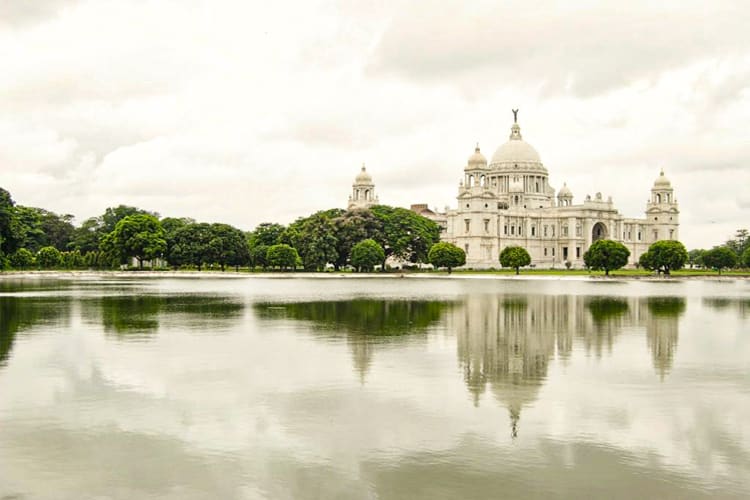
River day Farakka – Sahibganj
AM & PM: Today we sail full day towards Sahibganj enjoying breakfast and lunch. You will be fascinated by the passing landscape and the lively life on the river.
Overnight onboard Ganga Vilas.
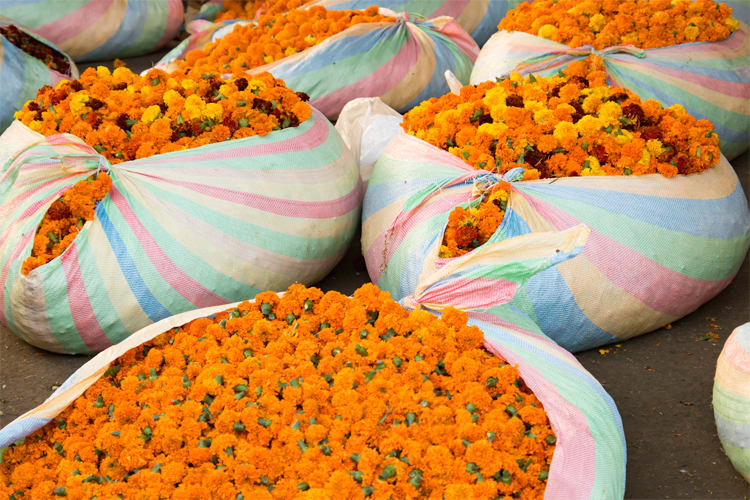
Sahibganj - Bateshwarsthan
AM: Enjoy a Village Walk in the morning. Return to ship and sail towards Bateshwarsthan enjoying lunch onboard.
PM: We will arrive in Bateshwarsthan by evening. Time permitting, enjoy a walk on the Ghats (embankments).
Overnight onboard Ganga Vilas.
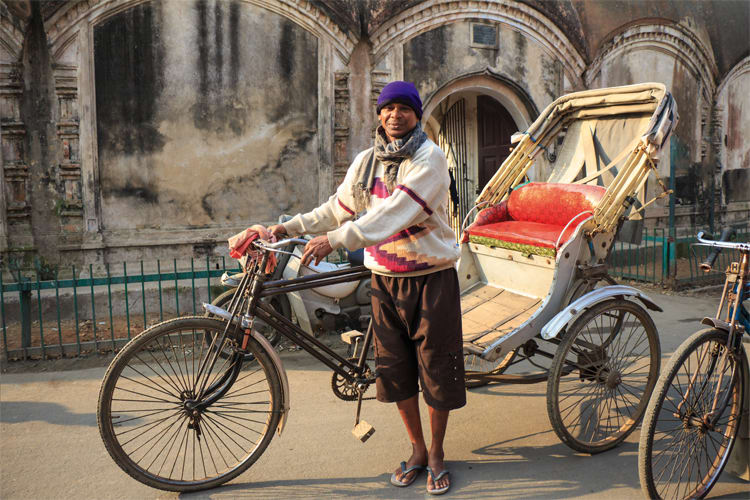
Bateshwarsthan - Vikramshila
AM: After breakfast drive in cars to the 8-9th century excavation site of the Vikramshila University. Spend the day walk around the archaeological ruins. Vikramshila University was an important Buddhist centre of learning under the rule of the Pala Dynasty. Subjects like theology, philosophy, grammar, metaphysics, and logic were taught here.
PM: Overnight onboard Ganga Vilas.
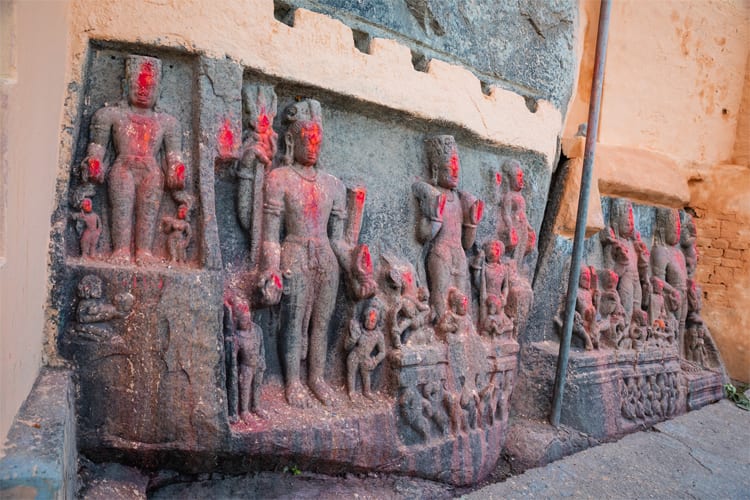
Bateshwarsthan - Sultanganj - Munger
AM: This morning, we sail to Sultanganj while enjoying breakfast onboard. Thereafter excursion to Sultanganj, which is notable for two prominent granite rock islands in the river connected to the mainland by a causeway. On one island is a mosque and on the other larger one, is the Ajgaibinath Temple dedicated to Lord Shiva. We will visit the Shiva temple.
PM: Return to the ship and sail towards Munger while enjoying lunch onboard.
Overnight onboard Ganga Vilas.

Munger
AM: After breakfast visit the Chandika Sthan Temple, which is dedicated to Goddess Shakti. It is one of the fifty-one Shakti Peethas, associated with the legend of Lord Vishnu who to save the world from Lord Shiva’s wrath, cut into pieces the corpse of Devi Sati that Shiva was carrying. Return to ship for lunch. Thereafter visit the Munger Fort and enjoy a walking tour and the local market popular for fruits, vegetables, textiles, and readymade garments.
PM: Overnight onboard Ganga Vilas.
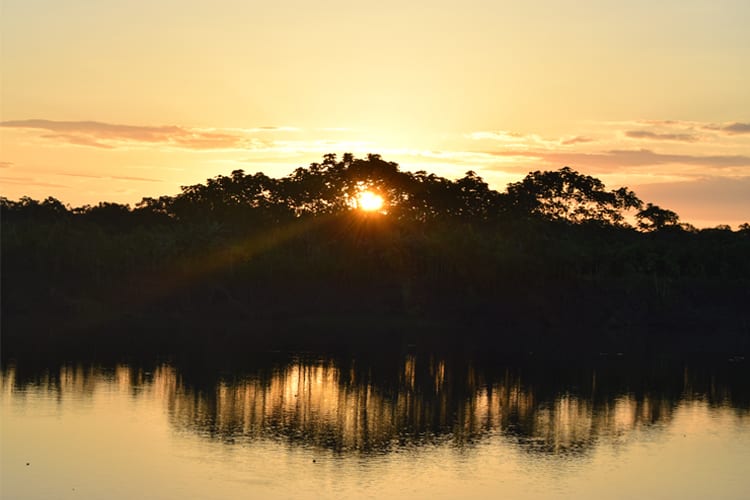
Munger - Barh
AM: Enjoying our breakfast and lunch onboard, we continue our journey further upstream to arrive at Barh, a historic town located on the southern banks of the Ganges.
PM: We arrive by late afternoon. In the evening walk in the riverside village of Barh to see the daily activities of the local people.
Overnight onboard Ganga Vilas.

Barh - Nalanda
AM: After breakfast, embark on a full day excursion to archaeological ruins of Nalanda (approx. 1-hour drive). A World Heritage Site Nalanda was a renowned Mahavihara (Buddhist monastic university) in ancient Magadha. It is considered by historians to be the world's first residential university and among the greatest centers of learning in the ancient world.
PM: We continue to nearby Rajgir for lunch at a local restaurant. Return to the ship by evening.
Overnight onboard Ganga Vilas.

River Day Barh - Patna
AM & PM: Today we sail full day through wonderful countryside to Patna, enjoying breakfast and lunch. Patna is the capital of the State of Bihar and is one of the oldest continuously inhabited places in the world founded in 490 BCE as Pataliputra.
Overnight onboard Ganga Vilas.
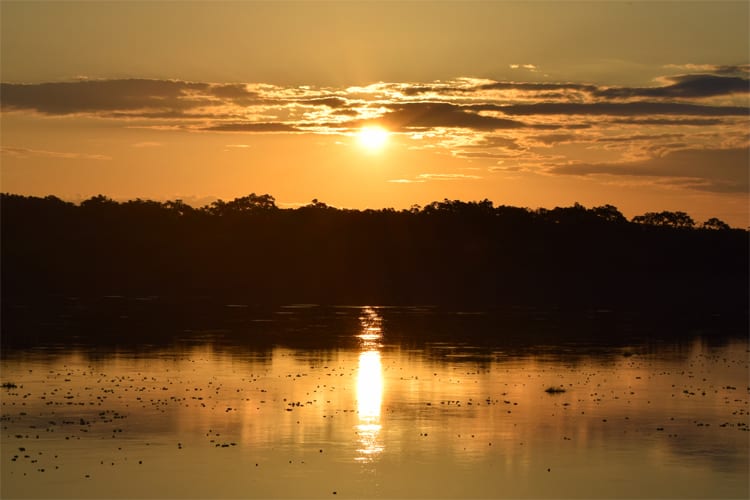
Patna Disembark / Drive Bodhgaya
AM: After an early breakfast, disembark the ship and drive to Bodhgaya (approx. 3-hrs drive). Upon arrival proceed to visit the Mahabodhi Temple, a World Heritage Site said to be the place where Gautama Buddha attained Enlightenment under a banyan tree.
PM: Transfer to hotel for check-in and lunch. The day can be spent exploring the several Buddhist temples and monasteries built by the people of various countries like Bhutan, Mongolia, China, Japan, Korea, Cambodia, Laos, Myanmar, Nepal, Sri Lanka, Taiwan, Thailand, Tibet and Vietnam in a wide area around the Mahabodhi Temple.
Overnight stay at a first class hotel.
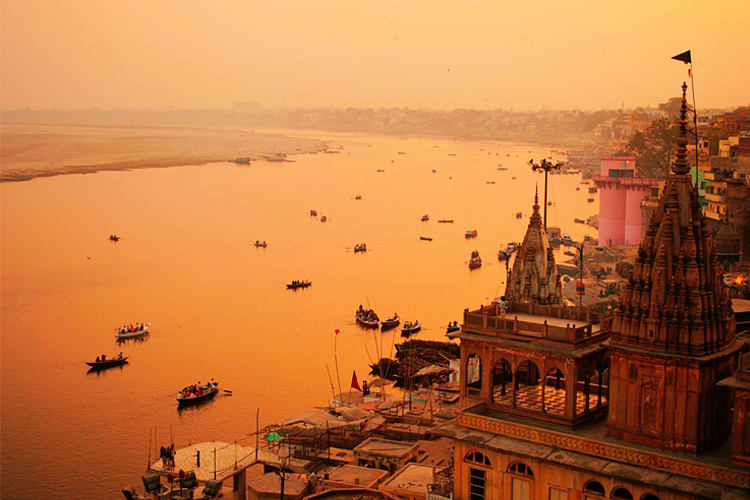
Drive Bodhgaya / Varanasi
AM: After early breakfast we drive to Varanasi (approx. 5-hrs). Upon arrival, check in at the hotel and have lunch. Varanasi, is a major religious hub in India, and is considered the holiest city in Hinduism and Jainism. It also played an important role in the development of Buddhism.
PM: Evening enjoy a walk on the ghats and arrive at the Dashashwamedh Ghat to see the “Ganga Aarti” ritual, performed by a group of priests lined up on the riverbank.
Overnight stay at a first class hotel.

Disembarkation
AM: At early dawn enjoy a Sunrise Boat Tour to witness the incredible scenes along the Holy River. Return to hotel for breakfast. Thereafter visit Sarnath where at 35 years of age, Gautama Buddha taught his first sermon after attaining enlightenment at Bodhgaya. The Dhamek Stupa here marks the precise location where Buddha preached his first discourse to his first five disciples. It is also one of the eight stupas where Buddha’s ashes after his cremation were divided and buried.
Thereafter transfer to the airport for onward journey.

Embarkation
PM: Arrive in Varanasi in the afternoon and transfer to the jetty for embarkation. Welcome and safety briefing, then enjoy lunch on board.
Overnight onboard Ganga Vilas.

Samath to Ghats
AM: Morning after breakfast onboard, visit the excavation site of Sarnath, the seat where Lord Buddha gave his first sermon after attaining enlightenment in Bodhgaya. The Archaeological Museum (closed on Fridays) here contains a large collection of sculptures that stand testimony to the fervent artistic and religious activity for more than a thousand years.
PM: Return to the ship for lunch. Thereafter, visit the Ghats by walking to experience the activities and hustle-bustle in the by-lanes. Continue to the riverside and witness the evening “Ganga Aarti” ritual.
Overnight onboard Ganga Vilas.
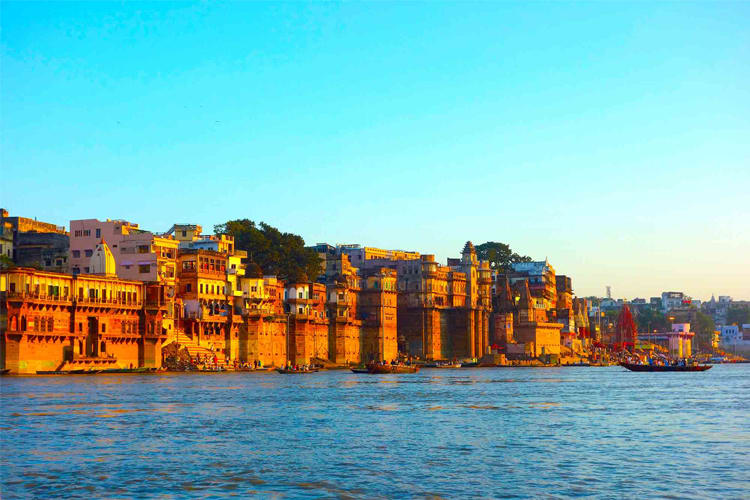
River Day Varanasi - Ghazipur
AM: Today we sail a full day downstream towards Ghazipur, which is well known for its opium factory, established by the British East India Company in 1820 and still the biggest legal opium factory in the world, producing the drug for the global pharmaceutical industry.
PM: Overnight onboard Ganga Vilas.
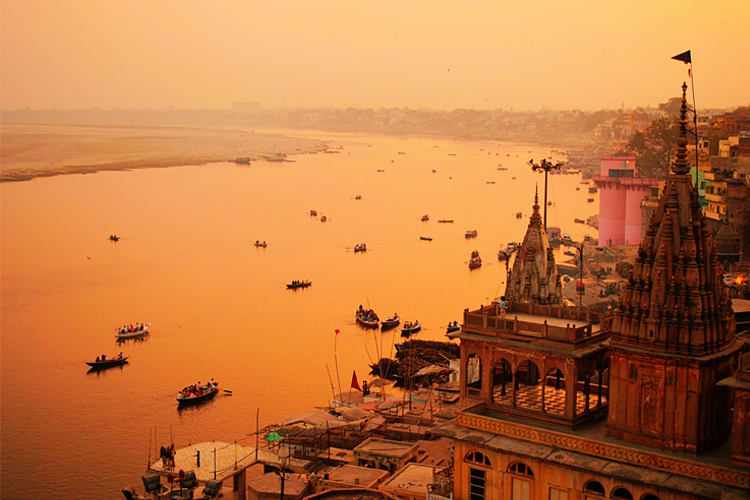
Ghazipur - Buxar
AM: Morning after breakfast visit to the Tomb of Lord Cornwallis, one of the major figures of Indian and British history. Cornwallis is famous for his role in the American Revolutionary War and then for his time as the Governor-General of India, being said to have laid the true foundation of British rule. He was later Lord Lieutenant of Ireland. He died in Ghazipur in 1805, soon after his return to India for his second appointment as Governor-General. His tomb, overlooking the Ganges, consists of a lofty dome supported by 12 Doric columns. At the center is the bust of Lord Cornwallis, below which is an epitaph in English.
PM: Thereafter sail a full day towards Buxar, in the State of Bihar, sailing past the battlefield of Chausa, where in 1539 CE, the Afghan Sher Shah Suri defeated Mughal Emperor Humayun and gained dominion over Bihar and Bengal.
Buxar is one of the most prominent towns of western Bihar, bordering the State of Uttar Pradesh. This town has been known since the epic period for being the seat of eminent saints, the battlefield of gods and demons, and a combat zone between foreign invasion and countrymen in modern Indian history. The discoveries from excavations have established a link between Buxar and the ancient civilizations of Mohenjo-Daro and Harappa. It is most famous for the battle fought here in 1764, between the forces of the British East India Company and the combined armies of Mir Qasim the Nawab of Bengal; Shuja-ud-daulah the Nawab of Awadh; and Mughal Emperor Shah Alam II. The battle was a decisive victory for the British East India Company.
Overnight onboard Ganga Vilas.

Buxar - Ghaghra Mod
AM: Morning after breakfast explore the Ram Rekha Ghat, which is associated with the legend of Lord Ram. It is said that after killing the demoness Tadka, Lord Ram to cleanse himself from the sin of killing a woman, took a bath in the Ganges near this ghat. He also made a “Shivling” from sand and clay and worshipped it. Located on the riverbank is the Sita Ram Upadhyay Museum (closed on Mondays) which houses various types of Archaeological objects, coins, and manuscripts. It is named after a local resident who had donated his personal collection to the museum. The terracotta collection of the Mauryan and Shungan periods deserves special mention.
PM: Return to the ship and sail onward towards Ghaghra Mod, the confluence where River Ghaghra meets River Ganges.Overnight onboard Ganga Vilas.
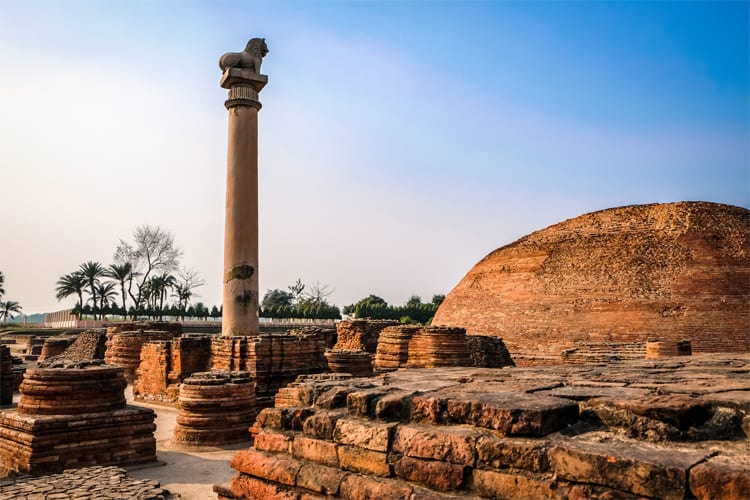
Ghaghra Mod – Patna
AM: Morning enjoy a walk in the riverbank village. Thereafter sail a full day to Patna, the capital and largest city of the State of Bihar. Patna is one of the oldest continuously inhabited places in the world. Patna was founded in 490 BCE as Pataliputra by the king of Magadha as the capital of his empire. It was a seat of learning and fine arts and home to many astrologers and scholars. Patna served as the seat of power, the political and cultural center of the Indian subcontinent during the Maurya and Gupta empires. With the fall of the Gupta Empire, Patna lost its glory. It was revived again in the 17th century by the British as a center of international trade.
PM: Overnight onboard Ganga Vilas.
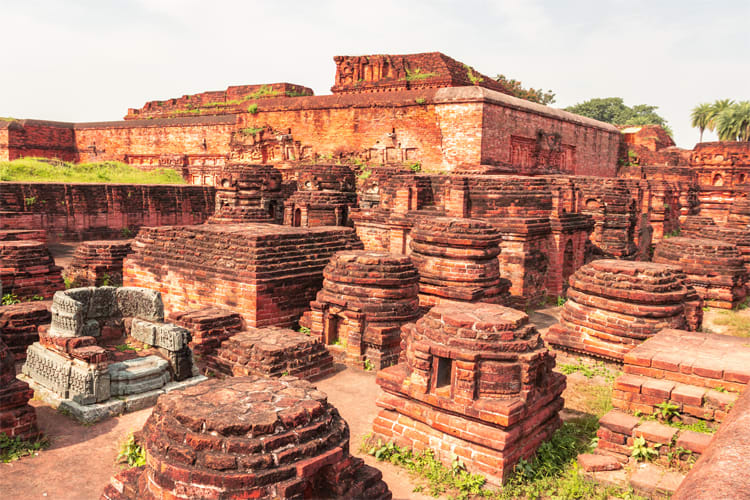
Patna – en route to Simaria
AM: Morning after breakfast onboard we proceed for a sightseeing tour of Patna visiting the Golghar, Patna Museum, and Gurudwara. The 18th-century Golghar, (closed on Mondays) literally meaning "Roundhouse", is a large beehive-shaped granary that was built "for the perpetual prevention of famine in these provinces" in 1784 by Warren Hastings, the British Governor General of India. Designed by Captain John Garstin of the Bengal Engineers, part of the East India Company’s Bengal Army, this pillar-less building has a height of 29m. One can climb at the top of the Golghar through the spiral stairway around it. The spiral staircase was designed to facilitate the passage of the workers, who had to carry grain bags up one flight, deliver their load through a hole at the top, and descend the other stairs. The top of the Golghar presents a wonderful panoramic view of the city and the Ganges. The Patna Museum (closed on Mondays) was started in April 1917 during the British Raj to house the historical artifacts found in the vicinity of Patna. Items on display in the multipurpose museum include archaeological objects, coins, art objects, paintings, instruments, textiles, paintings, bronze images and sculptures, and terra cotta images by Hindu and Buddhist artists. It has a rare collection of British-period paintings depicting day-to-day life, as well as a collection related to the first President of India Rajendra Prasad, who hailed from the region. Takht Sri Patna Sahib Gurdwara (Sikh Temple) was built to commemorate the birthplace of Guru Gobind Singh, the tenth Guru of the Sikhs in 1666. It was built by Maharaja Ranjit Singh, the first Maharaja of the Sikh Empire. The current shrine was built in the 1950s.
PM: Return to the ship and sail onward towards Simaria, anchoring en route. Overnight onboard Ganga Vilas.
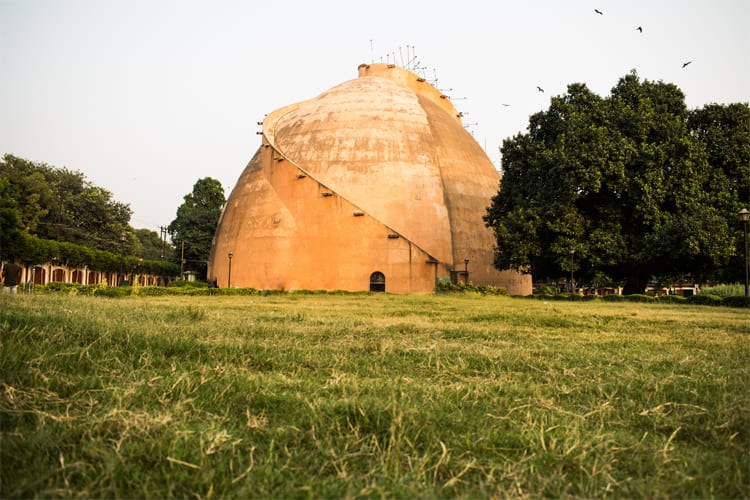
Arrive in Simaria – en route to Munger
AM: Further sailing in the morning brings us to Simaria. Visit by walking in the riverside village to see the daily activities of the local people.
We continue our journey further downstream sailing under the great bridge at Mokameh Ghat. Until the first half of the 20th century, Mokameh Ghat was an important trade and transport link for ferrying cargo and passengers by ships across the river to the northeastern parts of India. We anchor en route o Munger.
PM: Overnight onboard Ganga Vilas.
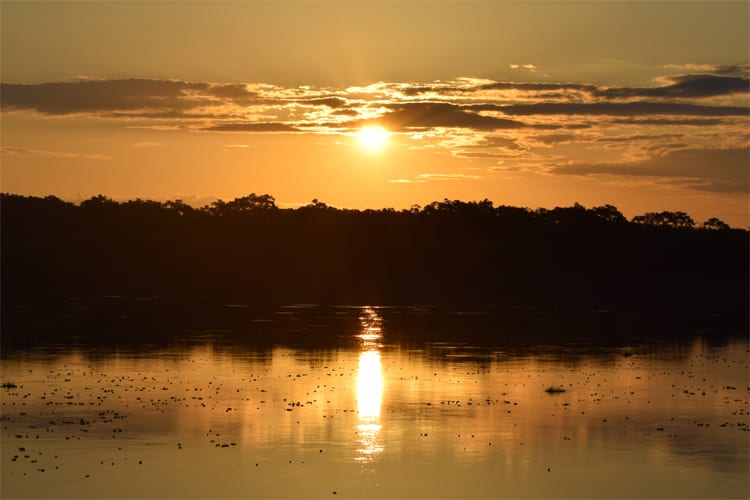
Munger
PM: We arrive in Munger by afternoon which is one of the largest and most industrialized cities in the state of Bihar. It is a hub for railway, gun, tobacco, and dairy product manufacturing. Late afternoon thereafter walk through the Fort ruins and visit the nearby market. The Munger
Fort is built on a rocky hillock on the south bank of the Ganges River. Its history is not completely dated but it is believed that it was built during the early rule of the Slave Dynasty (12th – 13th century). The Fort had a succession of Muslim rulers followed by the Mughals, till it was finally acceded to the British. The fort became a place of considerable importance to the British in Bengal till India'a independence in 1947. The fort houses several religious and historic monuments such as tombs of saints, a palace, and a British cemetery. The market is a very popular fruit and vegetable market with other shops of textiles and readymade garments.
Overnight onboard Ganga Vilas.
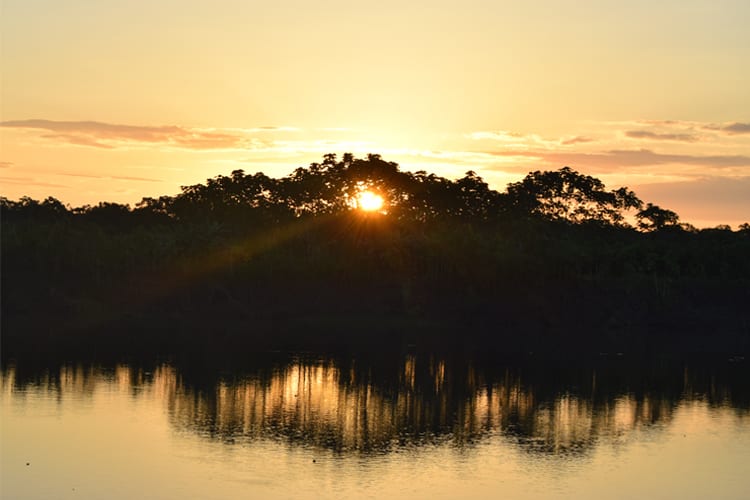
Munger - Sultanganj
AM: Morning visit to the Chandika Sthan Temple. Dedicated to Goddess Shakti it is one of the fifty-one Shakti Peethas, associated with the legend of Lord Vishnu who to save the world from Lord Shiva’s wrath, cut into pieces the corpse of Devi Sati that Shiva was carrying. It is believed that Sati Devi's left eye had fallen at this place which subsequently developed into a place of worship.
PM: We return to the ship and sail towards Sultanganj.
Overnight onboard Ganga Vilas.
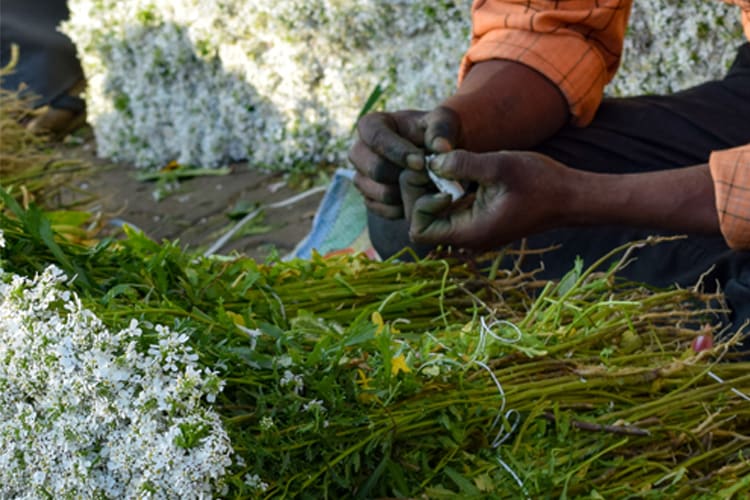
Sultanganj – Bateshwarsthan
AM: After breakfast excursion of Sultanganj, where there are two prominent granite rock islands in the river that are connected to the mainland by a causeway. On one island is a mosque and on the other larger one is the 16th-century Ajgaibinath Temple. We will visit the temple which is dedicated to Lord Shiva. Thereafter sail towards Bateshwarsthan.
PM: Overnight onboard Ganga Vilas.

Bateshwarsthan – Samtaghat
AM: Morning drive to the excavation site of the Vikramshila University and walk around the ruins. In the late 8th or early 9th century, Vikramshila University, along with that of Nalanda, was one of the two most important Buddhist centers of learning under the rule of the Pala Dynasty. Subjects like theology, philosophy, grammar, metaphysics, and logic were taught here.
PM: We return to the ship and sail towards Samtaghat. Overnight onboard Ganga Vilas.
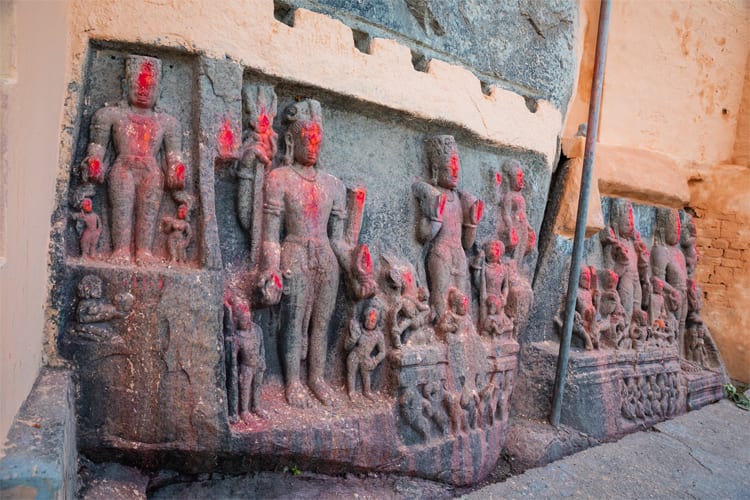
River day Samtaghat – Jangipur
AM: We will cast off early in the morning to reach the historic Farakka Lock Gate, which was built during the years 1963-75. The travel through the Feeder Canal will give us a chance to see the different birds of the region. After crossing the lock we cruise through the connecting canal to come on the Hooghly River. We can also see the Farakka barrage at a distance, which regulates the Ganges water into Bangladesh and India.
PM: We continue to sail toward Jangipur. Overnight onboard Ganga Vilas.
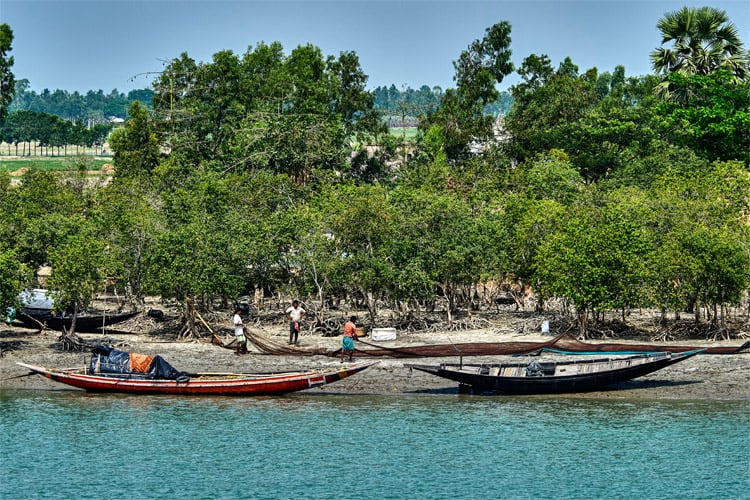
Riverday Jangipur – Murshidabad
AM: We sail a full day towards Murshidabad, a hidden architectural gem with dramatic whitewashed colonial-era structures.
PM: Overnight onboard Ganga Vilas.

Murshidabad
AM: Morning visit to the Katra mosque. Built by the first Nawab of Murshidabad – Murshid Quli Khan in 1724-25, this mosque has distinctive minarets from which the muezzin calls the faithful to Friday prayers. Thereafter proceed to visit the Hazarduari Palace (closed on Fridays), which dominates the waterfront, built during the reign of Nawab Nazim Humayun Jah (1824-1838 AD) by an English architect, McLeod Duncan, in the Greek “Doric” style. The palace has more than a thousand real and false doors in the vast corridors and is filled with colonial-era antiques, artwork, and manuscripts. Opposite the Palace is a vast Imambara – built by the Nawab for worship.
PM: Overnight onboard Ganga Vilas.
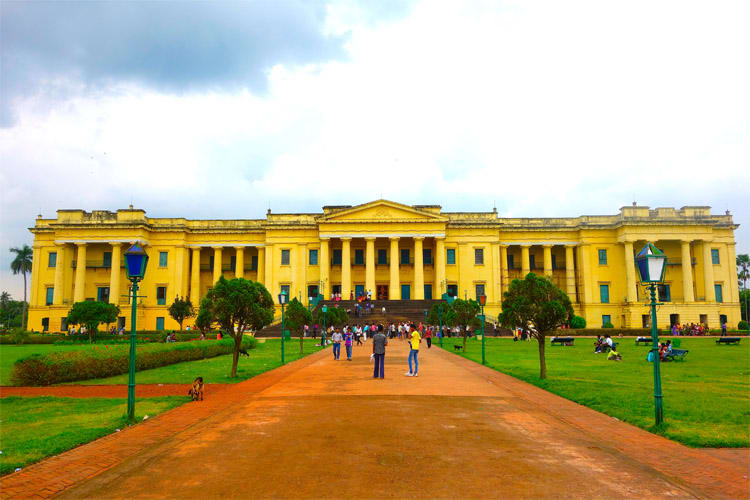
River day Murshidabad – Matiari
AM: We sail a full day today to arrive at the shore-side village of Matiari.
PM: Overnight onboard Ganga Vilas.
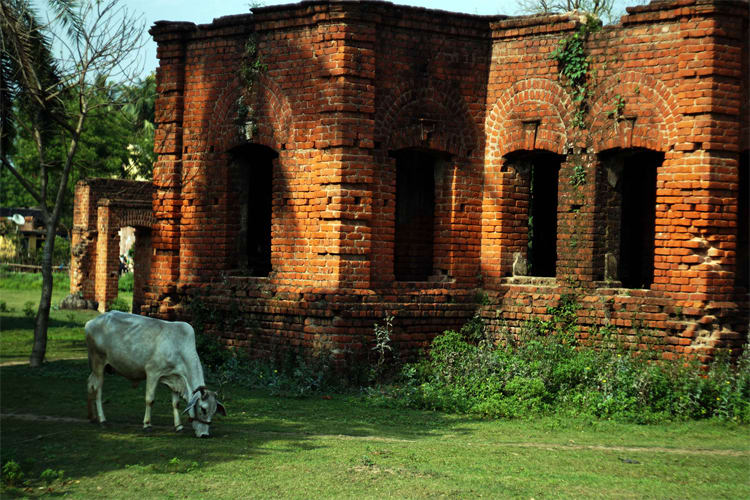
Matiari - Kalna
AM: Early this morning enjoy a walk in the village to see and experience the craftsmen at work. The village is known for manufacturing beautiful handcrafted brass items, utilizing traditional methods passed down for generations. These master craftsmen utilize recycled copper to create exquisite pots, platters, and more from their workshops in the village.
PM: Sail onward to Kalna. Overnight onboard Ganga Vilas.

Kalna - Kolkata
AM: In the morning enjoy a rickshaw ride through the town center of Kalna to visit the enchanting Rajbari Temple Complex, which has the highest concentration of temples in the region. Visit the Nabakailas Temple, built in 1809 by the Bardhaman Maharaja, which contains 108 eight slope-roofed shrines dedicated to Lord Shiva. Other temples in the complex feature diverse architecture and terra cotta plaques depict themes of Hindu epics, the mythical life of Sree Chaitanya, images of Durga, and various aspects of day-to-day life in the region.
PM: Return to the ship walk through the local market and sail onward to Kolkata. Overnight onboard Ganga Vilas.

Kolkata
AM: Morning after breakfast, visit Kolkata’s Flower Market, a feast for the eyes. Located below and adjacent to the cantilevered Howrah Bridge that spans the sacred river Ganges, the market is bustling from the wee hours of the morning. Countless vendors and buyers exchange money for flowers and countless locals carry bales of flowers that are at least twice their weight. There are several stalls where you can see artists creating a variety of garlands, ornaments, and other items made of flowers and leaves for temples, weddings, and other uses. Thereafter visit Kumartuli, a traditional potters’ quarter in northern Kolkata, renowned for its sculpting prowess, which not only manufactures clay idols for various festivals but also regularly exports them. The potters here fashioned the clay from the river beside their home into pots to be sold at the local market. Gradually they took to making the images of gods and goddesses, worshipped in large numbers in the mansions all around and later at community pujas in the city and beyond.
PM: Return to the ship for lunch. The afternoon excursion features a Panoramic Tour of the well-preserved British colonial buildings in Kolkata: Writer's Building, General Post Office, High Court, Raj Bhawan (Governor's House), Town Hall, Council House, Treasury Building, Reserve Bank of India and Dalhousie Square. The day continues with a visit to St. John's Church, the oldest Anglican Church in Kolkata, built-in 1756. The tour features the oldest functioning pipe organ in India and several tombs of British Generals who died during the Siege of Kolkata by Nawab Siraj-ud-Daula in 1756. Then we stop at the Grand Victoria Memorial for a photo stop. Proceed to visit Mother Teresa’s Home and Tomb (closed on Thursdays). Mother Teresa started the Missionary of Charity in 1952, then lived and worked there until her death in 1997. The permanent exhibition includes a visit to her personal room, we learn her life story and see her charity that is still active. Optional: We continue by foot a short distance to her orphanage, Sishu Bhawan (Children's Home), where one of the sisters will lead us on a tour. Enjoy cultural performances onboard.
Overnight onboard Ganga Vilas.
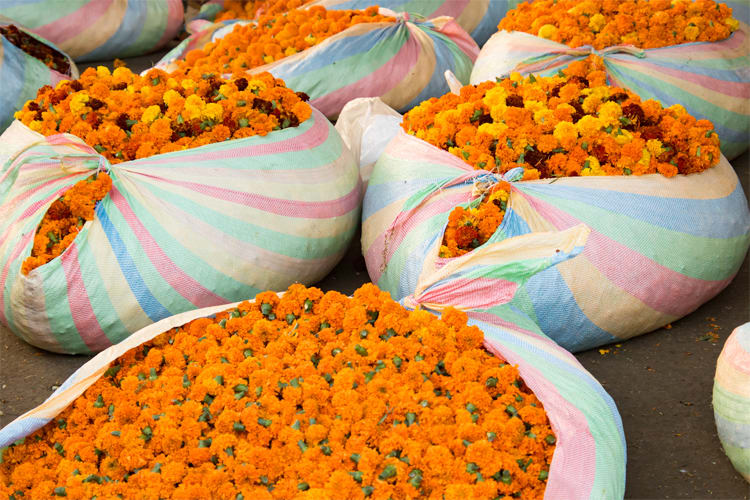
Disembarkation
AM: Following breakfast disembark the ship and transfer for your onward journey.
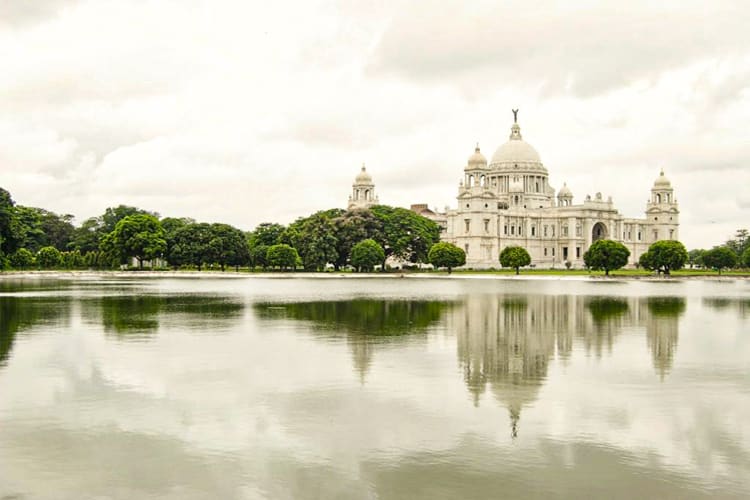
Embarkation
PM: Embark the ship at the Jetty in Kolkata and enjoy lunch on board. The afternoon excursion features a Panoramic Tour of the well-preserved British colonial buildings in Kolkata: Writer's Building, General Post Office, High Court, Raj Bhawan (Governor's House), Town Hall, Council House, Treasury Building, Reserve Bank of India and Dalhousie Square. The day continues with a visit to St. John's Church, the oldest Anglican Church in Kolkata, built-in 1756. The tour features the oldest functioning pipe organ in India and several tombs of British Generals who died during the Siege of Kolkata by Nawab Siraj-ud-Daula in 1756. Then we stop at the Grand Victoria Memorial for a photo stop. Proceed to visit Mother Teresa’s Home and Tomb (closed on Thursdays). Mother Teresa started the Missionary of Charity in 1952, then lived and worked here until her death in 1997. The permanent exhibition includes a visit to her personal room, we learn her life story and see her charity that is still active. Optional: We continue by foot a short distance to her orphanage, Sishu Bhawan (Children's Home), where one of the sisters will lead us on a tour.
Enjoy cultural performances onboard. Overnight onboard Ganga Vilas.
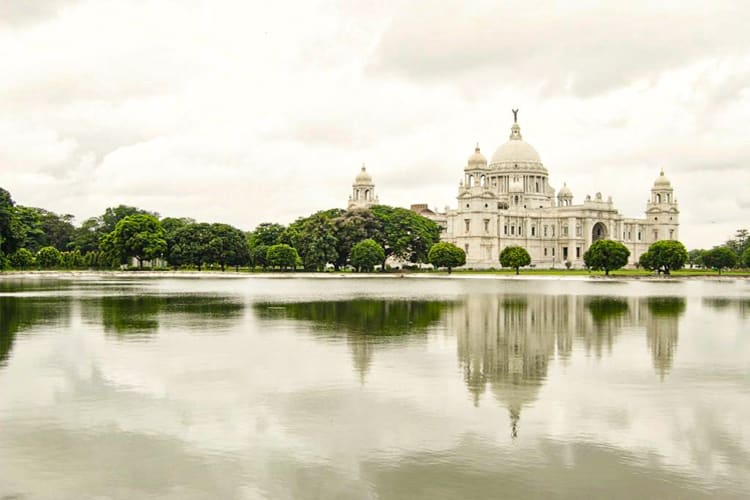
Kolkata - Kalna
AM: Morning after breakfast, visit Kolkata’s Flower Market, a feast for the eyes. Located below and adjacent to the cantilevered Howrah Bridge that spans the sacred river Ganges, the market is bustling from the wee hours of the morning. Countless vendors and buyers exchange money for flowers and countless locals carry bales of flowers that are at least twice their weight. There are several stalls where you can see artists creating a variety of garlands, ornaments, and other items made of flowers and leaves for temples, weddings, and other uses. Thereafter visit Kumartuli, a traditional potters’ quarter in northern Kolkata, renowned for its sculpting prowess, which not only manufactures clay idols for various festivals but also regularly exports them. The potters here fashioned the clay from the river beside their home into pots to be sold at the local market. Gradually they took to making the images of gods and goddesses, worshipped in large numbers in the mansions all around and later at community pujas in the city and beyond.
PM: Return to the ship for lunch and start sailing upstream passing below the Howrah Bridge and seeing
various colonial buildings along the Ganges River.
Overnight onboard Ganga Vilas.
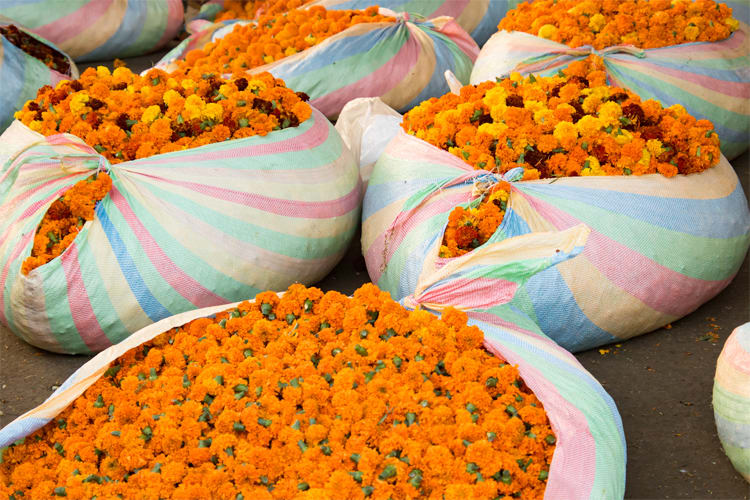
Kalna – Matiari
AM: In the morning enjoy a rickshaw ride through the town center of Kalna to visit the enchanting Rajbari Temple Complex, which has the highest concentration of temples in the region. Visit the Nabakailas Temple, built in 1809 by the Bardhaman Maharaja, which contains 108 eight slope-roofed shrines dedicated to Lord Shiva. Other temples in the complex feature diverse architecture and terra cotta plaques that depict themes of Hindu epics, the mythical life of Sree Chaitanya, images of Durga, and various aspects of day-to-day life in the region.
PM: Return to the ship walk through the local market and sail onward to arrive at the shore-side village of Matiari.
Overnight onboard Ganga Vilas.
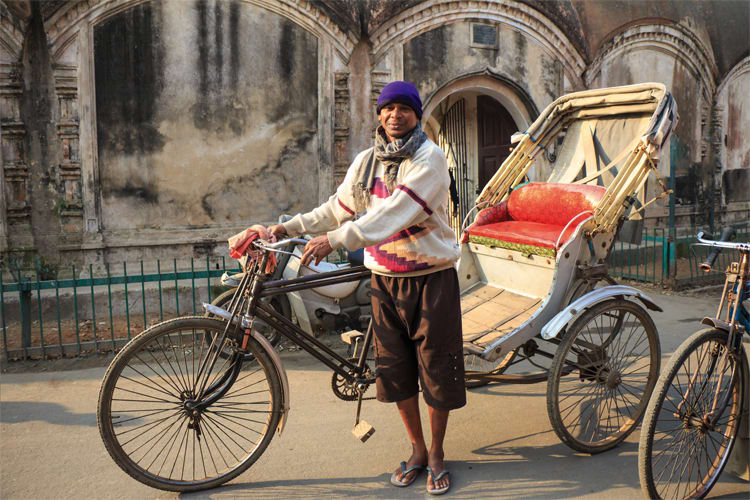
Matiari - Murshidabad
AM: Early this morning enjoy a walk in the village to see and experience the craftsmen at work. The village is known for manufacturing beautiful handcrafted brass items, utilizing traditional methods passed down for generations. These master craftsmen utilize recycled copper to create exquisite pots, platters, and more from their workshops in the village.
PM: Sail onward to Murshidabad, a hidden architectural gem with dramatic whitewashed colonial-era structures.
Overnight onboard Ganga Vilas.
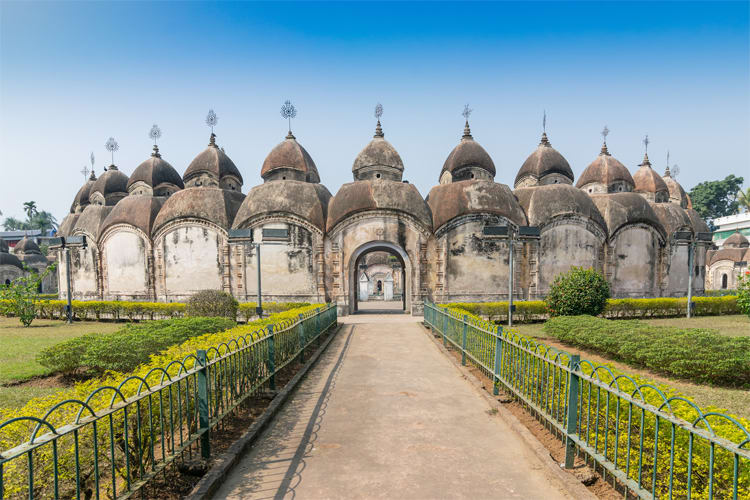
Mushidabad – Jangipur
AM: Morning visit to the Katra mosque. Built by the first Nawab of Murshidabad – Murshid Quli Khan in 1724-25, this mosque has distinctive minarets from which the muezzin calls the faithful to Friday prayers. Thereafter proceed to visit the Hazarduari Palace (closed on Fridays), which dominates the waterfront, built during the reign of Nawab Nazim Humayun Jah (1824-1838 AD) by an English architect, McLeod Duncan, in the Greek “Doric” style. The palace has more than a thousand real and false doors in the vast corridors and is filled with colonial-era antiques, artwork, and manuscripts. Opposite the Palace is a vast Imambara – built by the Nawab for worship.
PM: Return to the ship and sail towards Jangipur.
Overnight onboard Ganga Vilas.
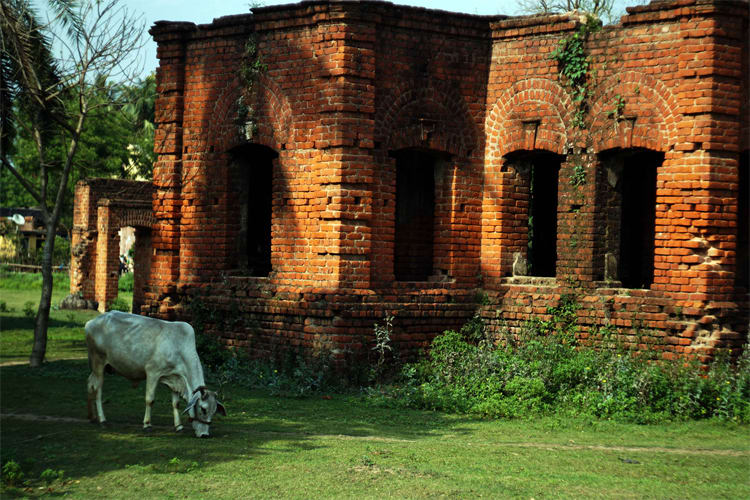
River day Jangipur – Samtaghat
AM: We will cast off early in the morning to reach the historic Farakka Lock Gate, which was built during the years 1963-75. The travel through the Feeder Canal will give us a chance to see the different birds of the region. After crossing the lock we cruise through the connecting canal to the Ganges revealing vast panoramas. We can also see the Farakka barrage at a distance, which regulates the Ganges water into Bangladesh and India.
PM: We continue to sail towards Samtaghat. Overnight onboard Ganga Vilas.
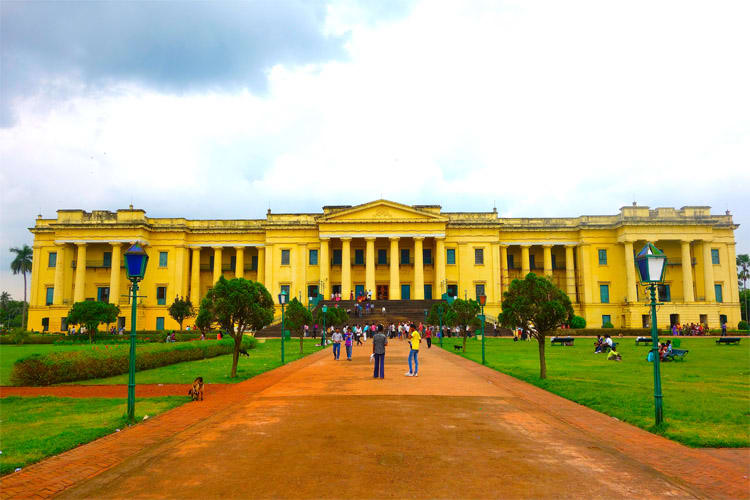
River day Samtaghat – Bateshwarsthan
AM: Today we sail full day towards Bateshwarsthan. Enjoy today on board. You will be fascinated by the passing landscape and the lively life on the river.
PM: Overnight onboard Ganga Vilas.

Bateshwarsthan – Sultanganj
AM: Morning drive to the excavation site of the Vikramshila University and walk around the ruins. In the late 8th or early 9th century, Vikramshila University, along with that of Nalanda, was one of the two most important Buddhist centers of learning under the rule of the Pala Dynasty. Subjects like theology, philosophy, grammar, meta-physics, and logic were taught here.
PM: We return to the ship and sail towards Sultanganj. Overnight onboard Ganga Vilas.
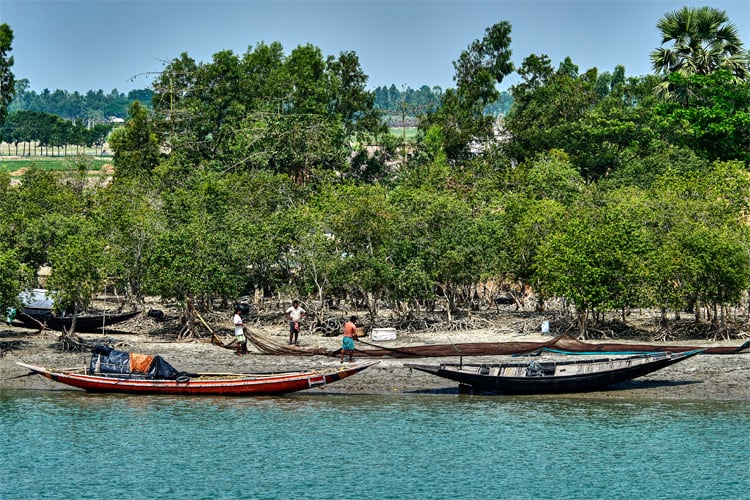
Sultanganj – Munger
AM: After breakfast excursion of Sultanganj, where there are two prominent granite rock islands in the river that are connected to the mainland by a causeway. On one island is a mosque and on the other larger one is the 16th-century Ajgaibinath Temple. We will visit the temple which is dedicated to Lord Shiva.
PM: Thereafter sail towards Munger, one of the largest and most industrialized cities in the state of Bihar. It is a hub for railway, gun, tobacco, and dairy product manufacturing. Overnight onboard Ganga Vilas.

Munger
AM: Morning visit to the Chandika Sthan Temple. Dedicated to Goddess Shakti it is one of the fifty-one Shakti Peethas, associated with the legend of Lord Vishnu who to save the world from Lord Shiva’s wrath, cut into pieces the corpse of Devi Sati that Shiva was carrying. It is believed that Sati Devi's left eye had fallen at this place which subsequently developed into a place of worship.
PM: Return to ship for lunch and thereafter walk through the Fort ruins and visit the nearby market. The Munger Fort is built on a rocky hillock on the south bank of the Ganges River. Its history is not completely dated but it is believed that it was built during the early rule of the Slave Dynasty (12th – 13th century). The Fort had a succession of Muslim rulers followed by the Mughals, till it was finally acceded to the British. The fort became a place of considerable importance to the British in Bengal till India'a independence in 1947. The fort houses several religious and historic monuments such as tombs of saints, a palace, and a British cemetery. The market is a very popular fruit and vegetable market with other shops of textiles and readymade garments.
Overnight onboard Ganga Vilas.
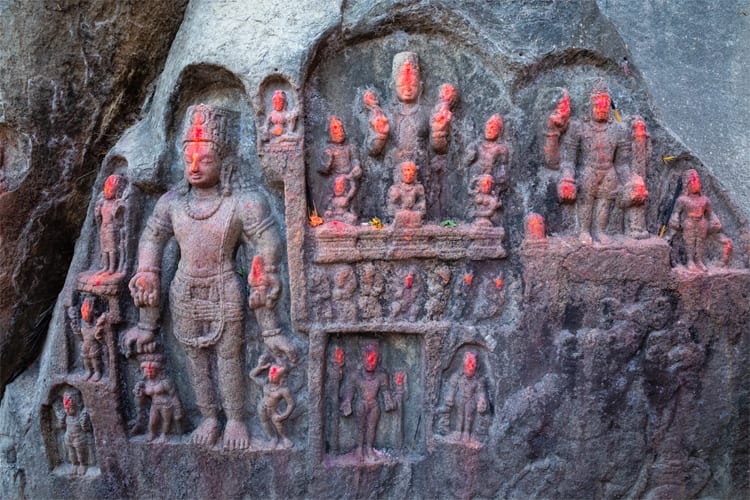
Munger – Simaria
AM: We continue our journey further upstream sailing under the great bridge at Mokameh Ghat. Until the first half of the 20th century, Mokameh Ghat was an important trade and transport link for ferrying cargo and passengers by ships across the river to the northeastern parts of India. We arrive in Samaria by late afternoon. Visit by walking in the riverside village to see the daily activities of the local people.
PM: Overnight onboard Ganga Vilas.
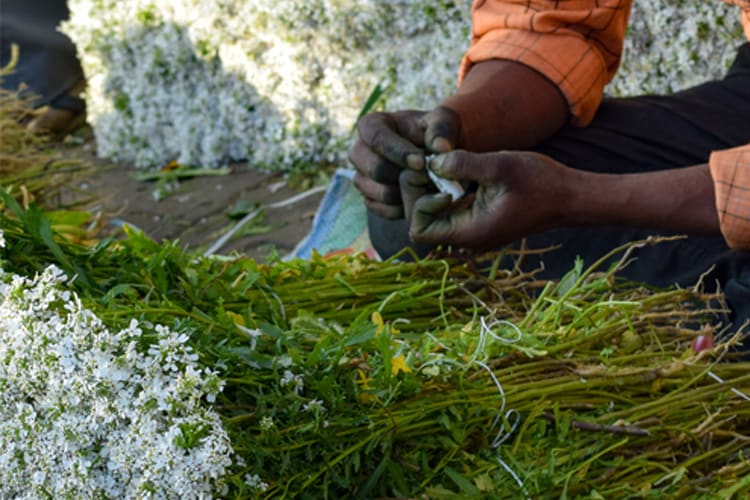
River day Simaria – Patna
AM: Today we sail a full day through the wonderful countryside to Patna, the capital and largest city of the State of Bihar. Patna is one of the oldest continuously inhabited places in the world. Patna was founded in 490 BCE as Pataliputra by the king of Magadha as the capital of his empire. It was a seat of learning and fine arts and home to many astrologers and scholars. Patna served as the seat of power, the political and cultural center of the Indian subcontinent during the Maurya and Gupta empires. With the fall of the Gupta Empire, Patna lost its glory. It was revived again in the 17th century by the British as a center of international trade.
PM: Overnight onboard Ganga Vilas.
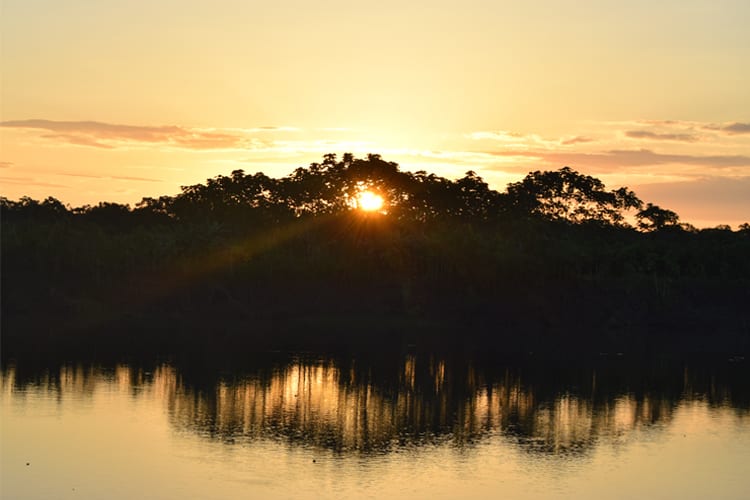
Patna – Ghaghra Mod
AM: Morning after breakfast onboard we proceed for a sightseeing tour of Patna visiting the Golghar, Patna Museum, and Gurudwara. The 18th-century Golghar, (closed on Mondays) literally meaning "Roundhouse", is a large beehive-shaped granary that was built "for the perpetual prevention of famine in these provinces" in 1784 by Warren Hastings, the British Governor General of India. Designed by Captain John Garstin of the Bengal Engineers, part of the East India Company’s Bengal Army, this pillar-less building has a height of 29m. One can climb at the top of the Golghar through the spiral stairway around it. The spiral staircase was designed to facilitate the passage of the workers, who had to carry grain bags up one flight, deliver their load through a hole at the top, and descend the other stairs. The top of the Golghar presents a wonderful panoramic view of the city and the Ganges. The Patna Museum (closed on Mondays) was started in April 1917 during the British Raj to house the historical artifacts found in the vicinity of Patna. Items on display in the multipurpose museum include archaeological objects, coins, art objects, paintings, instruments, textiles, paintings, bronze images and sculptures, and terra cotta images by Hindu and Buddhist artists. It has a rare collection of British-period paintings depicting day-to-day life, as well as a collection related to the first President of India Rajendra Prasad, who hailed from the region. Takht Sri Patna Sahib Gurdwara (Sikh Temple) was built to commemorate the birthplace of Guru Gobind Singh, the tenth Guru of the Sikhs in 1666. It was built by Maharaja Ranjit Singh, the first Maharaja of the Sikh Empire. The current shrine was built in the 1950s.
PM: Return to the ship and sail onward towards Ghaghra Mod, the confluence where River Ghaghra meets River Ganges. Overnight onboard Ganga Vilas.
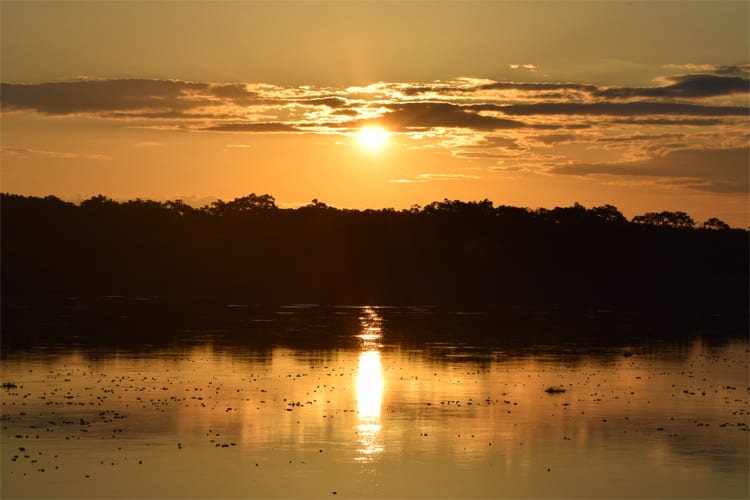
Ghaghra Mod – en route to Buxar
AM: Morning enjoy a walk in the riverbank village. Thereafter sail a full day towards Buxar, anchoring en route.
PM: Overnight onboard Ganga Vilas.
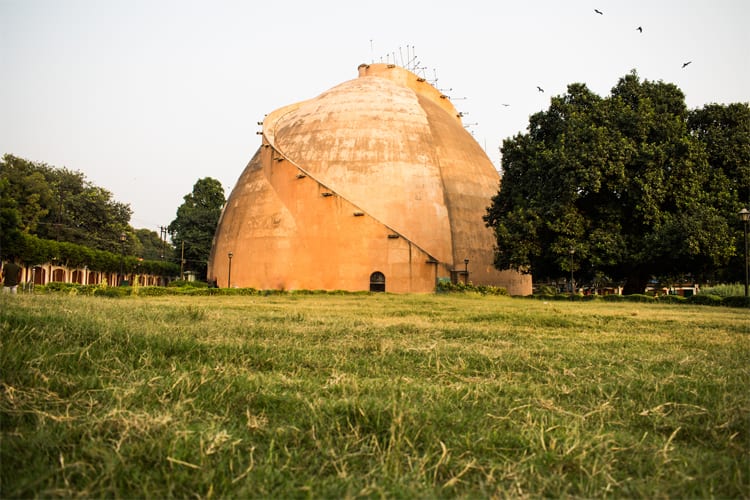
Arrival in Buxar
AM: We arrive in Buxar by late morning. Buxar is one of the most prominent towns of western Bihar, bordering the State of Uttar Pradesh. This town has been known since the epic period for being the seat of eminent saints, the battlefield of gods and demons, and a combat zone between foreign invasion and countrymen in modern Indian history. The discoveries from excavations have established a link between Buxar and the ancient civilizations of Mohenjo-Daro and Harappa. It is most famous for the battle fought here in 1764, between the forces of the British East India Company and the combined armies of Mir Qasim the Nawab of Bengal; Shuja-ud-daulah the Nawab of Awadh; and Mughal Emperor Shah Alam II. The battle was a decisive victory for the British East India Company.
PM: Post lunch explore the Ram Rekha Ghat, which is associated with the legend of Lord Ram. It is said that after killing the demoness Tadka, Lord Ram to cleanse himself from the sin of killing a woman, took a bath in the Ganges near this ghat. He also made a “Shivling” from sand and clay and worshipped it. Located on the riverbank is the Sita Ram Upadhyay Museum (closed on Mondays) which houses various types of Archaeological objects, coins, and manuscripts. It is named after a local resident who had donated his personal collection to the museum. The terracotta collection of the Mauryan and Shungan periods deserves special mention.
Overnight onboard Ganga Vilas.
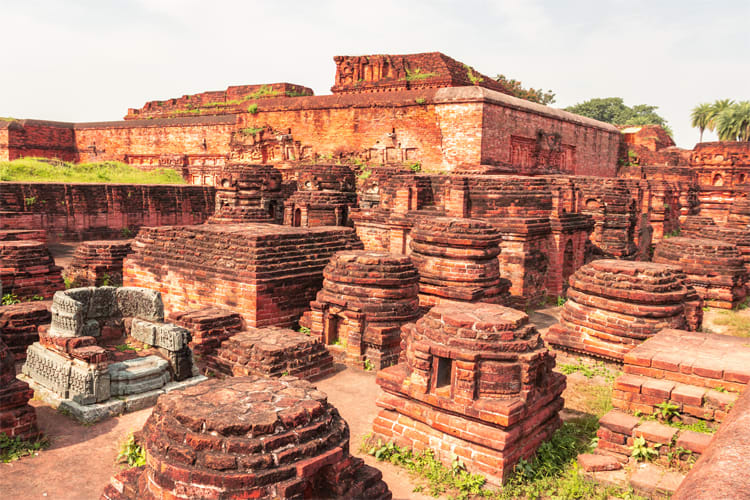
Buxar – Ghazipur
AM: Today we sail to Ghazipur, in the State of Uttar Pradesh, sailing past the battlefield of Chausa, where in 1539 CE, the Afghan Sher Shah Suri defeated Mughal Emperor Humayun and gained dominion over Bihar and Bengal. Ghazipur is well known for its opium factory, established by the British East India Company in 1820 and still the biggest legal opium factory in the world, producing the drug for the global pharmaceutical industry.
PM: Afternoon, visit to the Tomb of Lord Cornwallis, one of the major figures of Indian and British history. Cornwallis is famous for his role in the American Revolutionary War and then for his time as the Governor-General of India, being said to have laid the true foundation of British rule. He was later Lord Lieutenant of Ireland. He died in Ghazipur in 1805, soon after his return to India for his second appointment as Governor-General. His tomb, overlooking the Ganges, consists of a lofty dome supported by 12 Doric columns. At the center is the bust of Lord Cornwallis, below which is an epitaph in English.
Overnight onboard Ganga Vilas.
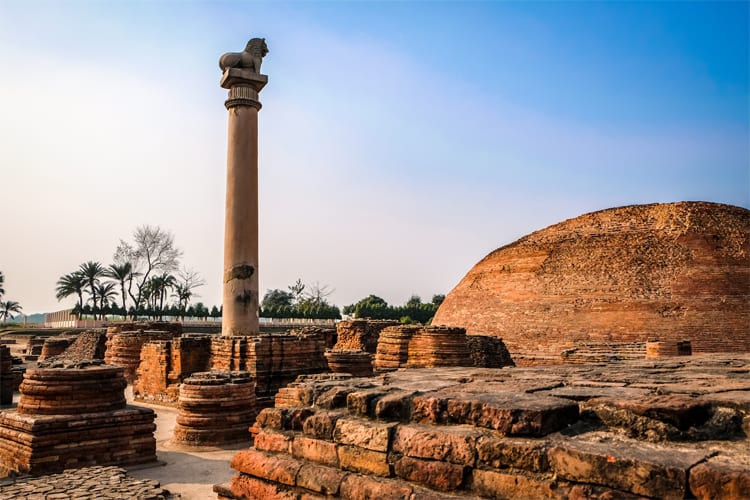
River day Ghazipur – en route to Varanasi
AM: Today we sail full day upstream towards Varanasi.
PM: We will moor for the night before Varanasi, subject to river tide conditions. Overnight onboard Ganga Vilas.
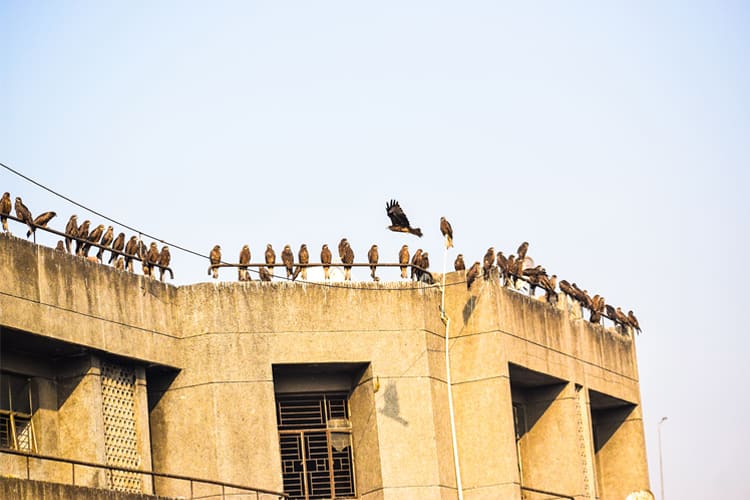
Arrival in Varanasi
AM: We sail further upstream through the day to arrive by late afternoon depending upon tide conditions in Varanasi, our final destination of the cruise, Varanasi. Known variously as Banaras and Kashi, Varanasi is a major religious hub in India, and is considered the holiest city in Hinduism and Jainism. It also played an important role in the development of Buddhism. It is also an important industrial center, famous for its muslin and silk fabrics, perfumes, ivory works, and sculpture.
PM: Overnight onboard Ganga Vilas.
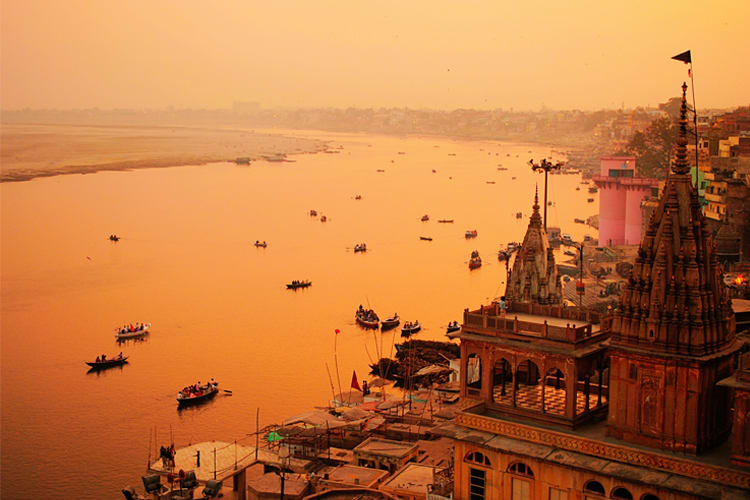
Varanasi
AM: Morning after breakfast onboard, visit the excavation site of Sarnath, the seat where Lord Buddha gave his first sermon after attaining enlightenment in Bodhgaya. The Archaeological Museum (closed on Fridays) here contains a large collection of sculptures that stand testimony to the fervent artistic and religious activity for more than a thousand years.
PM: Return to the ship for lunch. Thereafter, visit the Ghats by walking to experience the activities and hustle-bustle in the by-lanes. Continue to the riverside and witness the evening “Ganga Aarti” ritual.
Overnight onboard Ganga Vilas.
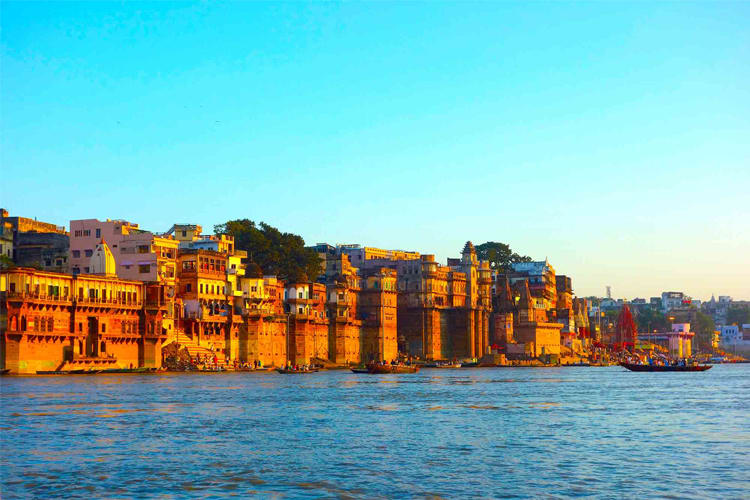
Disembarkation
AM: Following breakfast disembark the ship and transfer for your onward journey.
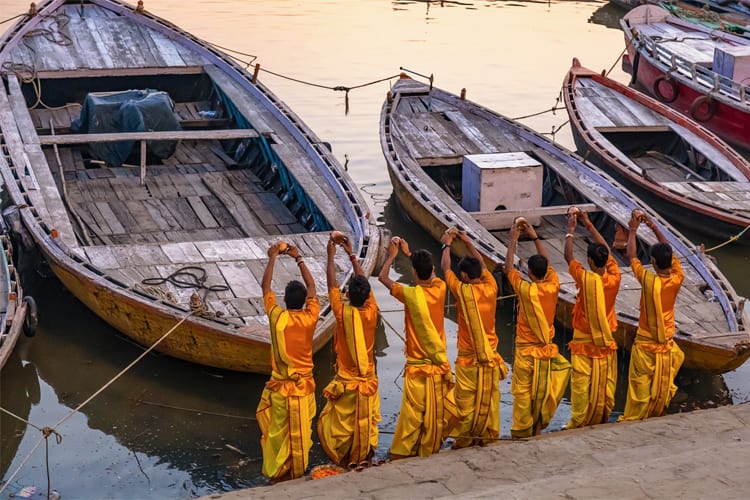
Embarkation
Embark the ship at the Jetty in Varanasi and enjoy lunch on board. Thereafter, visit the Ghats by walking to experience the activities and hustle-bustle in the by-lanes. Continue to the riverside and witness the evening “Ganga Aarti” ritual.
Overnight onboard Ganga Vilas.
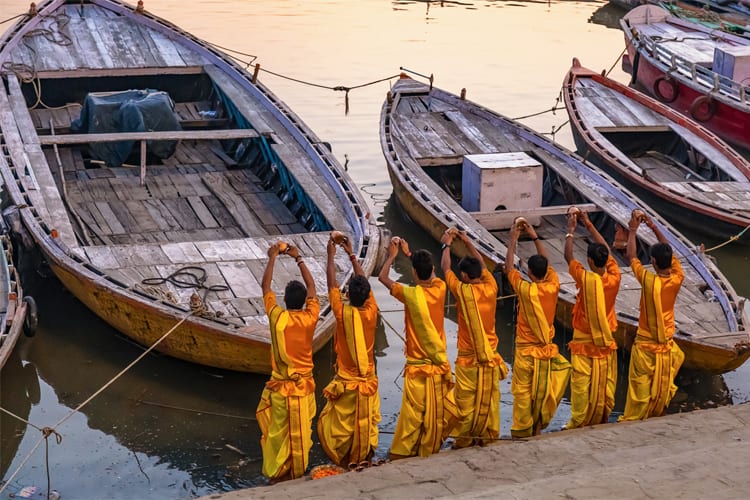
Varanasi
After breakfast, we will visit the excavation site of Sarnath, the seat where Lord Buddha gave his first sermon after attaining enlightenment in Bodhgaya. Return to the ship for lunch and begin sail downstream towards the outskirts of Varanasi.
Overnight onboard Ganga Vilas.
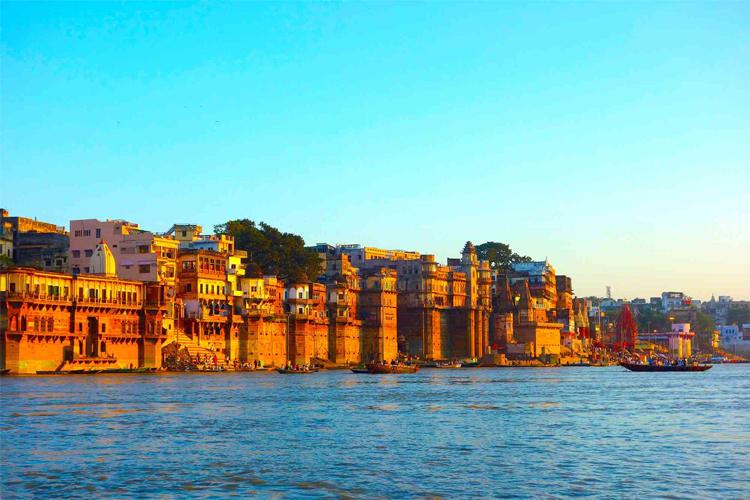
Sailing Day - Varanasi - Ghazipur
Enjoy the meandering landscape as you sail to Ghazipur and enjoy the amenities onboard.
Overnight onboard Ganga Vilas.
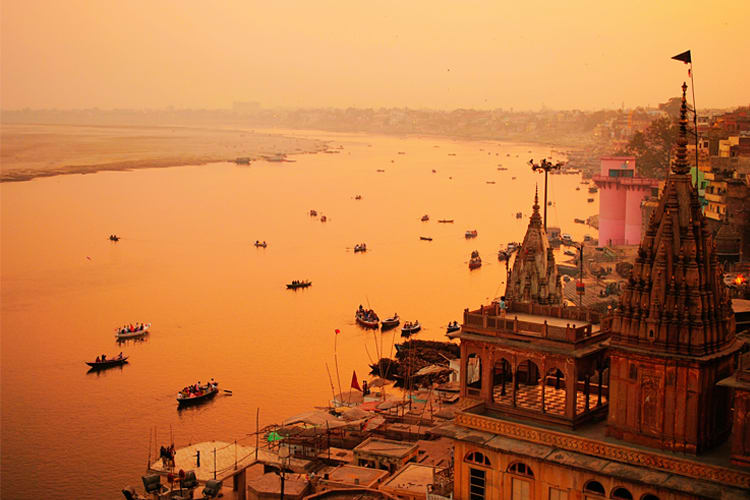
Ghazipur - Buxar
In Ghazipur, visit the tomb of Lord Cornwallis, one of the most important figures in Indian and British history. Cornwallis is famous for his time as Governor General of India. His tomb, overlooking the Ganges, consists of a high dome supported by 12 Doric columns.
Continue to Buxar, famous for the 1764 war between the forces of the British East India Company and the armies of Mir Qasim, Shuja-ud-daulah and the Mughal Emperor Shah Alam II. The battle was a decisive victory for the British East India Company.
Overnight onboard Ganga Vilas.
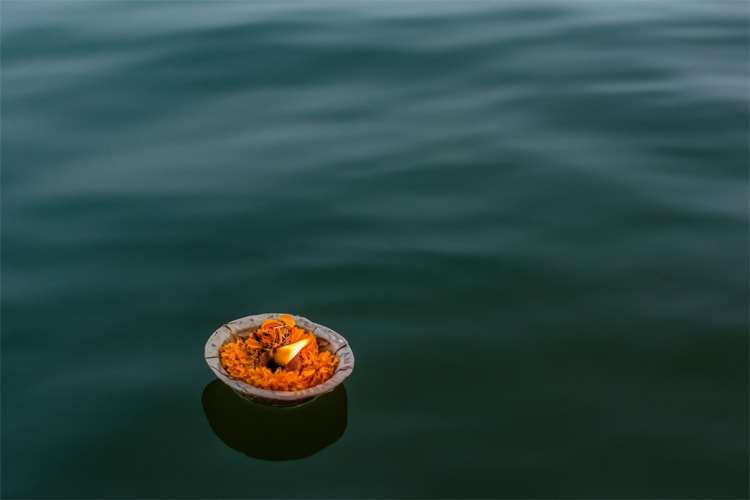
Buxar - Ghaghra Mod
After breakfast visit the Ram Rekha Ghat. It is associated with a legend from the epic Ramayana that after killing the demoness Tadka, Lord Ram to cleanse himself from the sin of killing a woman, took a bath in the Ganges here. Also visit the Sita Ram Upadhyay Museum, named after a local resident who had donated his personal collection which includes archaeological objects, coins and manuscripts. Return to ship and sail towards Ghaghra Mod, the confluence where River Ghaghra meets River Ganges.
Overnight onboard Ganga Vilas.
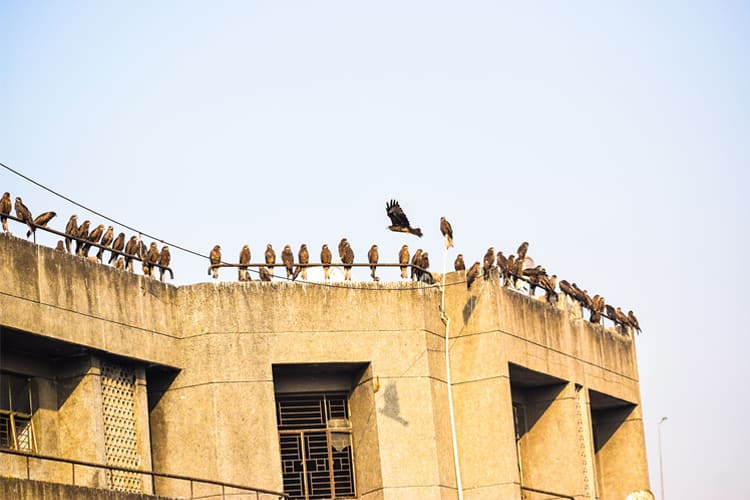
Ghaghra Mod – Patna
After breakfast enjoy a walk in the riverbank village. Thereafter sail full day towards Patna, the capital of the State of Bihar. Patna is one of the oldest continuously inhabited places in the world founded in 490 BCE as Pataliputra.
Overnight onboard Ganga Vilas.

Patna - En Route To Simaria
After breakfast proceed to visit the Golghar and Patna Museum. Return to ship for lunch and sail towards Simaria, anchoring en route.
Overnight onboard Ganga Vilas.
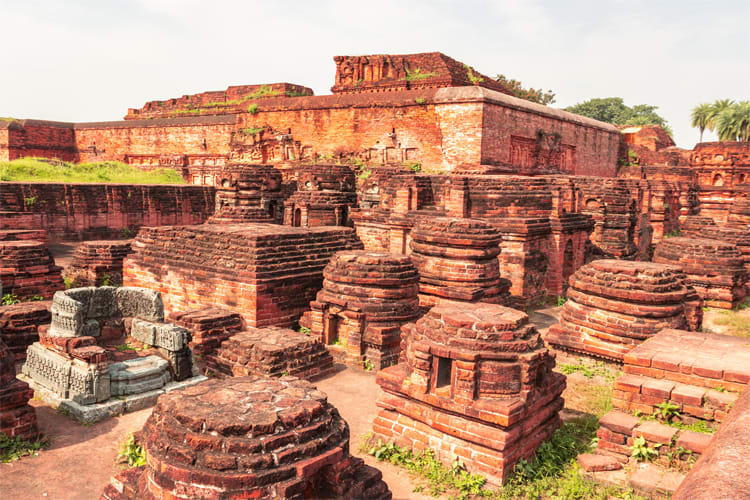
Simaria - En Route To Munger
Further sailing in the morning brings us to Simaria. After breakfast walk in the riverside village to see the daily activities of the local people. Return to the ship and continue our journey further downstream sailing under the great bridge at Mokameh Ghat and anchor en route to Munger.
Overnight onboard Ganga Vilas.
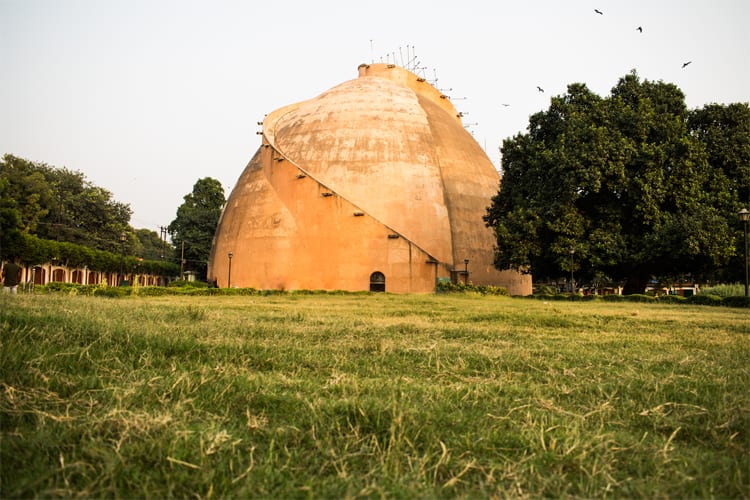
Arrive Munger
Enjoying breakfast onboard, we arrive in Munger by afternoon. Enjoy a walk through the ruins of the fort. Afterward visit the local market, famous for fruits and vegetables as well as various textiles.
Overnight onboard Ganga Vilas.
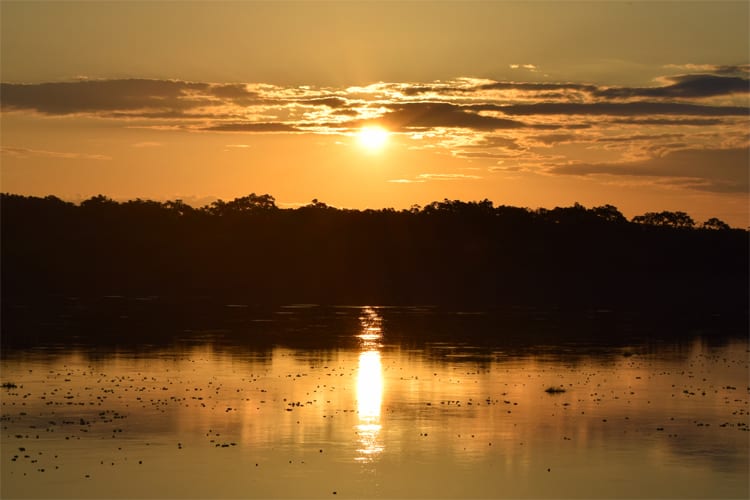
Munger - Sultanganj
After breakfast visit the Chandika Sthan Temple, which is dedicated to Goddess Shakti. It is one of the fifty-one Shakti Peethas, associated with the legend of Lord Vishnu who to save the world from Lord Shiva’s wrath, cut into pieces the corpse of Devi Sati that Shiva was carrying. Return to ship for lunch and begin sail towards Sultanganj.
Overnight onboard Ganga Vilas.

Sultanganj - Bateshwarsthan
After breakfast excursion to Sultanganj, which is notable for two prominent granite rock islands in the river connected to the mainland by a causeway. On one of the islands is a mosque; on the other larger one is the Ajgaibinath Temple dedicated to Lord Shiva. We will visit the Shiva temple. Return to the ship and sail towards Bateshwarsthan while enjoying lunch onboard.
Overnight onboard Ganga Vilas.
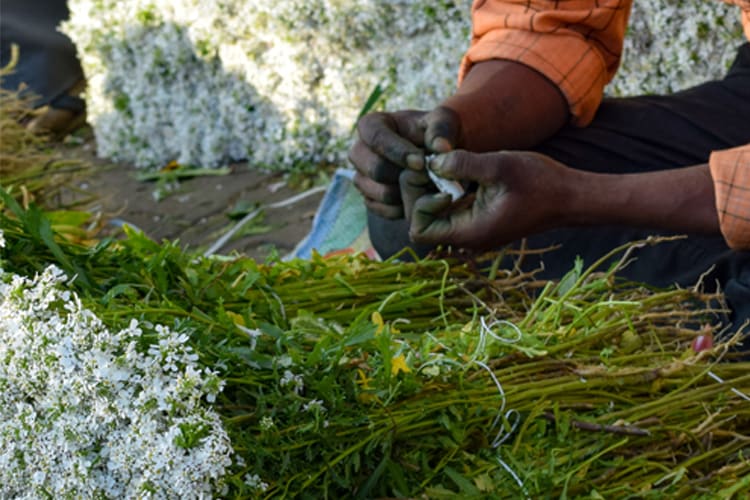
Bateshwarsthan - Samtaghat
After breakfast drive in cars to the 8-9th century excavation site of the Vikramshila University and walk around the ruins. Vikramshila University was an important Buddhist centre of learning under the rule of the Pala Dynasty. Subjects like theology, philosophy, grammar, metaphysics, and logic were taught here. We return to the ship and sail towards Samtaghat. You will be fascinated by the passing landscape and the lively life on the river.
Overnight onboard Ganga Vilas.
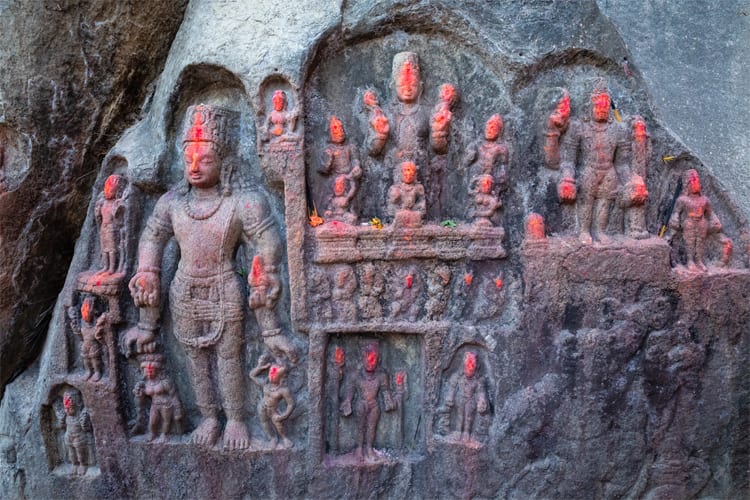
Samtaghat – Farakka – Jangipur
Enjoying breakfast onboard we sail in the morning to cross the historic Farakka Lock Gate. The travel through the Feeder Canal will give us a chance to see the different birds of the region. After crossing the Lock Gate, we cruise through the connecting canal to the Hooghly River, the lower Ganges. We continue to sail towards Jangipur.
Overnight onboard Ganga Vilas.
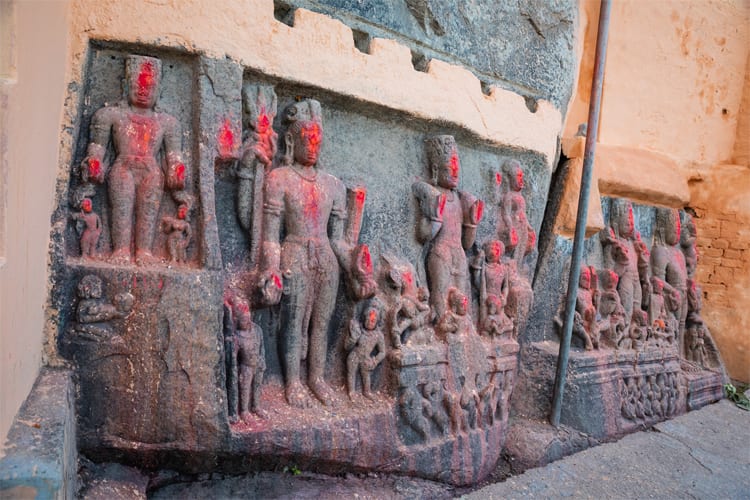
Jangipur - Murshidabad
We sail full day towards Murshidabad enjoying breakfast and lunch onboard. We arrive in Murshidabad by the evening. Murshidabad is a hidden architectural gem with dramatic whitewashed colonial-era structures.
Overnight onboard Ganga Vilas.

Murshidabad
After breakfast ride the Toto (e-rickshaw) through the countryside to the Katra mosque, which has distinctive minarets. Return to the ship for lunch. Thereafter visit the Hazarduari Palace, which dominates the waterfront. Built by an English architect, McLeod Duncan, in the Greek "Doric" style, the palace has more than a thousand real and false doors in the vast corridors and is filled with colonial-era antiques.
Overnight onboard Ganga Vilas.
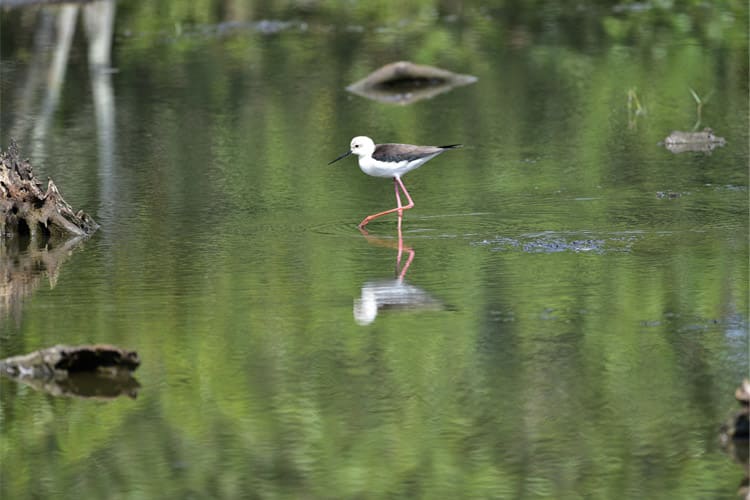
Mushidabad – Matiari
We sail full day towards the shore-side village of Matiari enjoying breakfast and lunch onboard. We arrive in Matiari by the evening.
Overnight onboard Ganga Vilas.
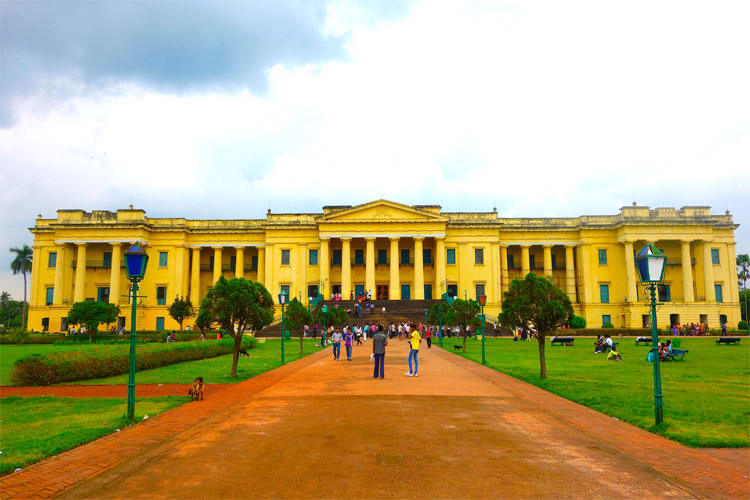
Matiari - Kalna
Early this morning walk in the village to see and experience the craftsmen at work. These master craftsmen utilize recycled copper to create exquisite pots, platters, and more from their workshops in the village. Return to the ship for breakfast and sail onward to Kalna. We arrive in Kalna by the evening.
Overnight onboard Ganga Vilas.
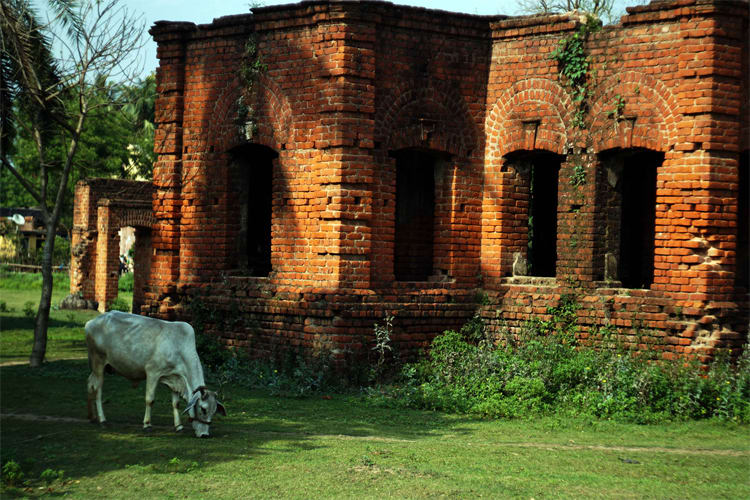
Kalna - Kolkata
After breakfast ride e-rickshaws to visit the enchanting Rajbari temple complex. The Nabakailas temple contains 108 eight-slope-roofed shrines dedicated to Lord Shiva. Other temples in the complex feature diverse architecture and terracotta plaques depict themes of Hindu epics and various aspects of day-to-day life in the region. Return to the ship walking through the local vegetable market. Begin sail towards Kolkata and arrive by the evening.
Overnight onboard Ganga Vilas.
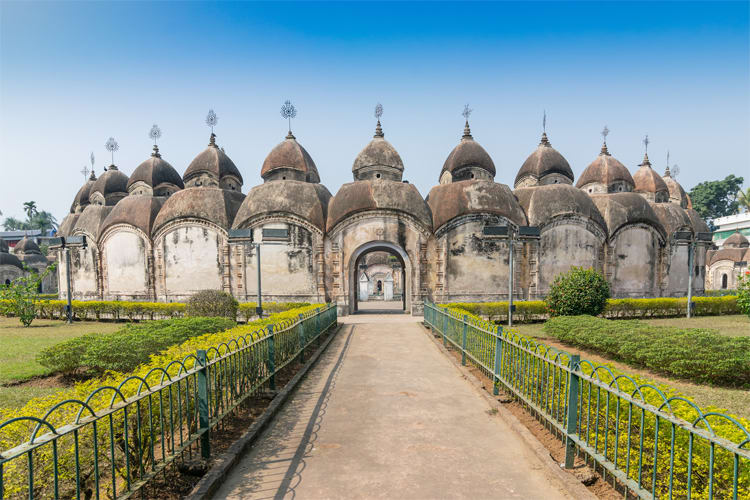
Kolkata
After breakfast, visit the Flower Market, where you can see artists creating a variety of garlands, ornaments, and other items made of flowers and leaves for temples, weddings, and other uses. Thereafter, visit Kumartuli, a traditional potters’ quarter renowned for its sculpting prowess. Return to ship for lunch. Thereafter Panoramic Tour of Dalhousie Square’s heritage buildings; St. John's Church, Victoria Memorial, and Mother Teresa’s Home. Enjoy cultural performance onboard.
Overnight onboard Ganga Vilas.
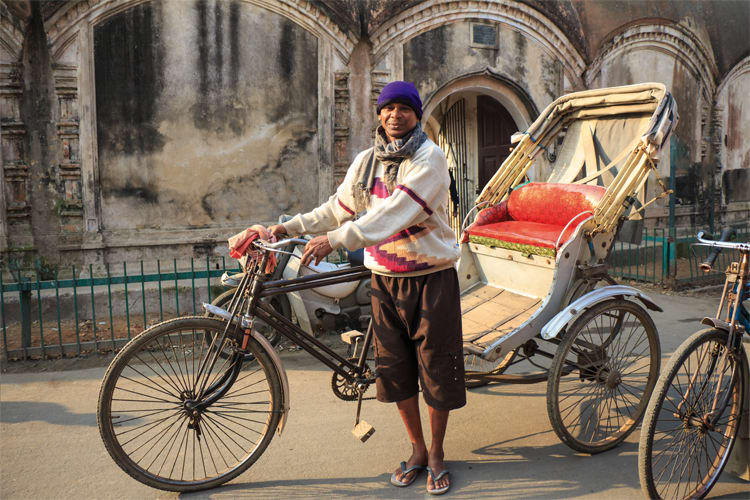
Kolkata - Immigration Formalities
After breakfast stroll around the historic Indentured Memorial Jetty, named in memory of the Indian indentured labourers who set sail from here for Suriname, which was then a Dutch colony in South America in 1873. Post-lunch Immigration formalities.
Overnight onboard Ganga Vilas.
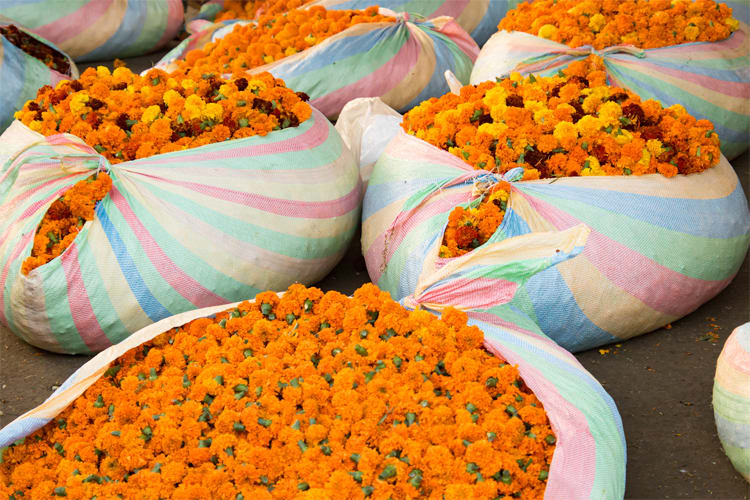
Kolkata - Namkhana (Sundarbans)
After breakfast visit the Indian Museum and the local market. Return to the ship for lunch and based on the tide situation we will sail towards Namkhana, anchoring en route. It is the gateway of the Sundarbans National Park, a World Heritage Site.
Overnight onboard Ganga Vilas.

Namkhana – Bali Island
Enjoying breakfast onboard we arrive at Namkhana. We will visit Bhagabatpur Island which is known for its crocodile project that has a hatchery of the estuarine crocodiles. Return to ship for lunch and sail to Bali Island cruising through the creek. A typical Sundarban village, Bali’s inhabitants are engaged in farming, paddy husking, honey packing and fishing.
Overnight onboard Ganga Vilas.
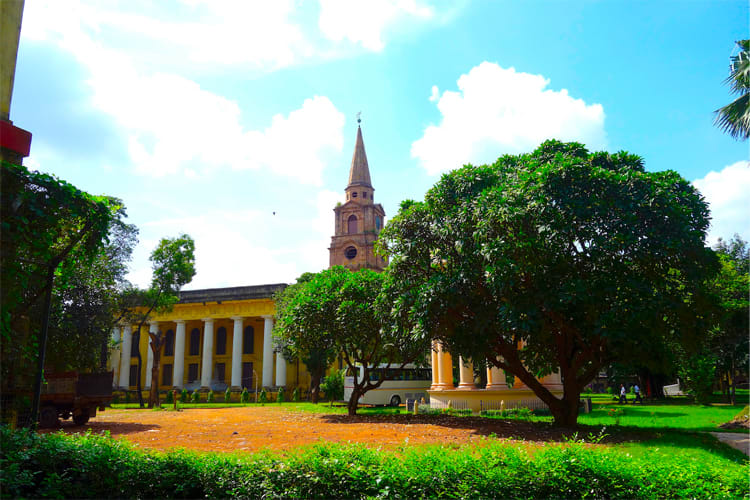
Bali Island
After an early breakfast ride in the country boat to the Dobanki Watchtower, enjoy a canopy walk at an elevation of 20 feet to reveal the riveting flora and fauna. Return to the ship for lunch. Thereafter enjoy a walk in the village of Bali and interact with the villagers engaged in creating handicrafts and witness a tribal dance.
Overnight onboard Ganga Vilas.
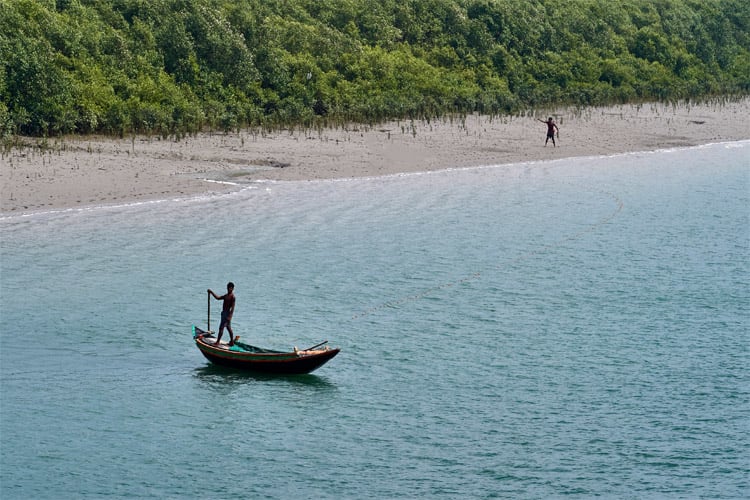
Bangar Island – Hemnagar
We sail to Hemnagar today enjoying breakfast and lunch onboard and viewing the wilderness of the mangrove forest. It is the southernmost habitation of the region and the check-post for customs formalities for crossing the international riverine border between India and Bangladesh.
Overnight onboard Ganga Vilas.
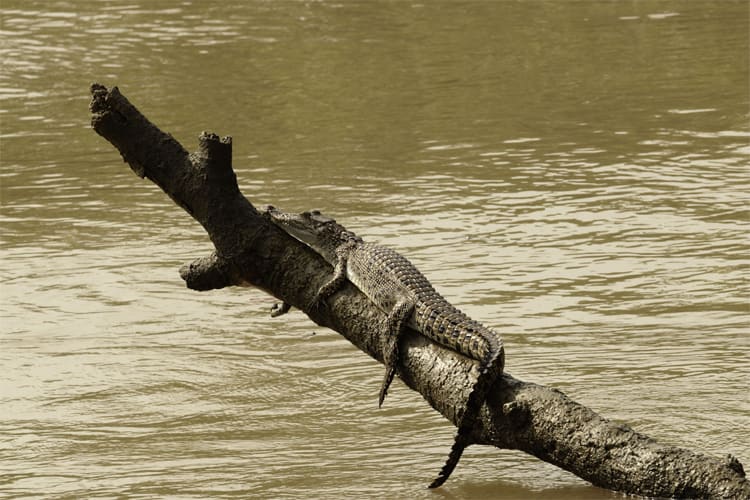
Hemnagar - Antihara (Bangladesh)
Today, enjoying breakfast and lunch onboard, we sail through the core area of the Sundarbans down towards the Bangladeshi side to arrive in Antihara, which is the check post for the Immigration & Custom formalities of Bangladesh.
Overnight onboard Ganga Vilas.
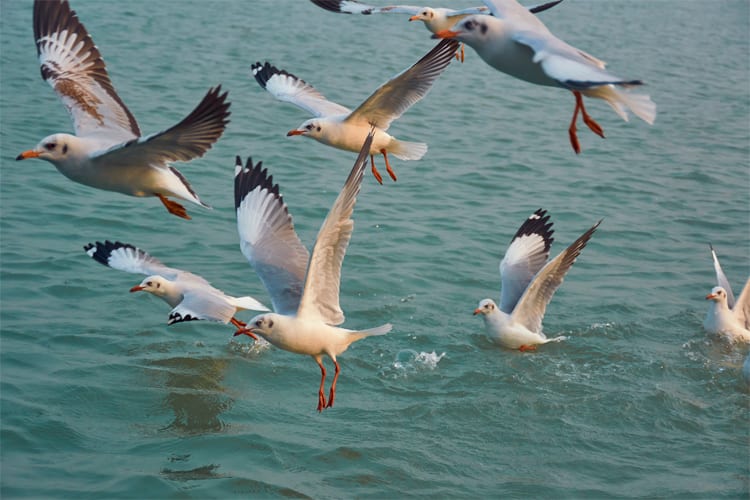
Antihara – Mongla
Sail towards Mongla town, while having breakfast onboard. Mongla is the gateway to the Sundarbans on the Bangladesh side. Post lunch visit to the Sixty Domed Mosque, a World Heritage Site. The mosque is locally known as the 'Shat Gombuj', which in Bangla literally means Sixty Domes.
Overnight onboard Ganga Vilas.

Mongla – Karamjol - Kaukhali
Morning, we sail to Karamjol. After breakfast, we visit the Forest Reserve Centre, which protects a vast range of mammals, insects, bird species, reptiles, and fish. Return to the ship for lunch and sail towards Kaukhali.
Overnight onboard Ganga Vilas.

Kaukhali - Barisal
A further sail brings us to Kaukhali while we enjoy our breakfast onboard. Upon arrival walk in the village visiting a Kumar Pada (potters’ colony), the local market and a Hindu Vaishnavite temple with a cremation ground adjacent to it. Return to ship for lunch and sail to Barisal, which is fondly called the Venice of Bengal.
Overnight onboard Ganga Vilas.
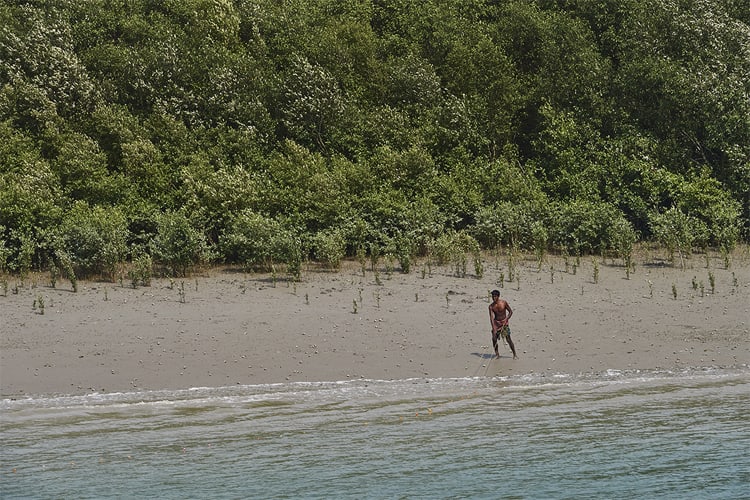
Barisal
After breakfast visit a Floating Market, which is renowned for its fruits. Many farmers and wholesalers gather here every day to sell their produce. Return to ship for lunch. Thereafter visit the Oxford Epiphany Church, an Anglican church, which is one of the oldest in the region. Its structure reflects the Greek architectural style.
Overnight onboard Ganga Vilas.
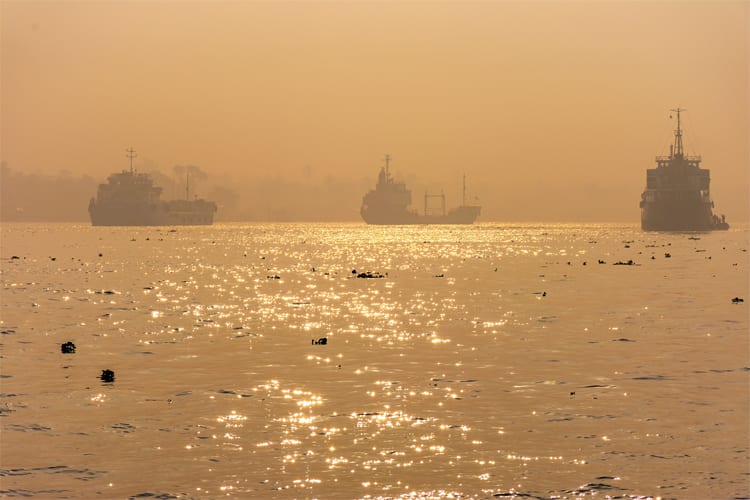
Barisal - Dhaka
Today enjoying breakfast and lunch onboard, we sail full day to Dhaka viewing the picturesque countryside, shoreline of coconut palms, bananas, mango trees, small settlements, cargo freighters and, nouka ferrying passengers across the river. Arrive at the Mawa jetty, a busy ferry ghat near Dhaka, the Capital of Bangladesh.
Overnight onboard Ganga Vilas.

Dhaka Sightseeing
After breakfast, a panoramic tour of Dhaka’s heritage buildings like Dhaka University, Curzon Hall, Old High Court, Parliament Building, and Dhakeshwari Temple. Lunch in the city, thereafter visit Sonargaon, the ‘Golden City’ which was the ancient capital of undivided Bengal.
Overnight onboard Ganga Vilas.
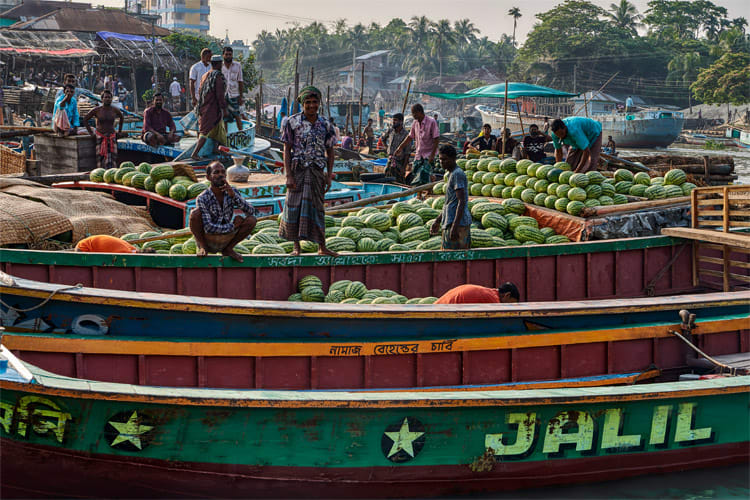
Dhaka – Aricha – Tangail
Today while enjoying breakfast and lunch onboard, we sail full day upstream to the Aricha River port. Aricha is a prime spot for catching the renowned Hilsha fish and several trawlers can be seen in the vicinity. We will sail further upstream towards Tangail, anchoring en route.
Overnight onboard Ganga Vilas.
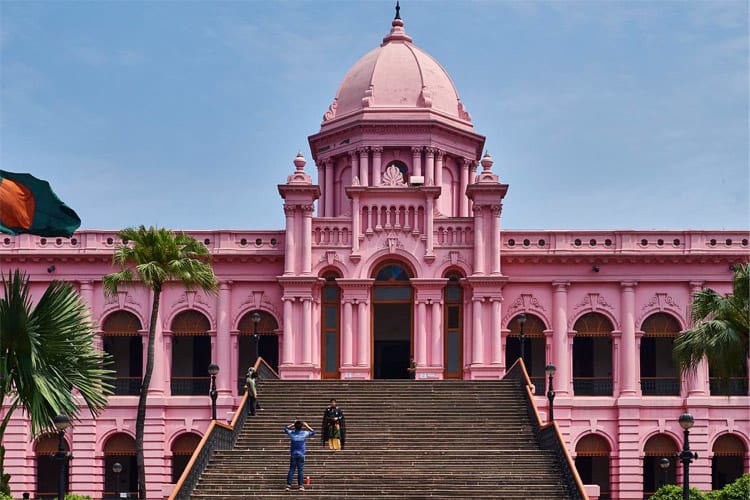
Arrive Tangail
A further sail brings us to Tangail, an important handloom and cotton weaving centre, enjoying breakfast and lunch onboard. Post lunch we visit the Atia Mosque, a four-domed monument built during the reign of Mughal emperor Jahangir. In popular culture, it is dubbed as the 10 Taka Mosque when the Government of Bangladesh issued a 10 Taka banknote which had an image of the mosque in its obverse.
Overnight onboard Ganga Vilas.
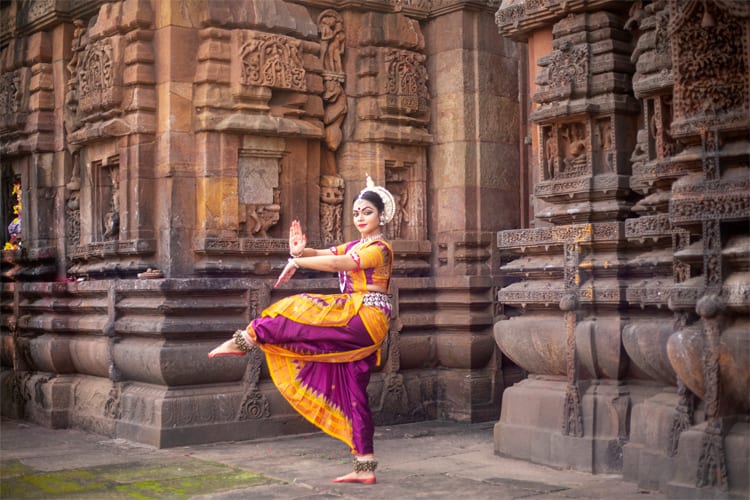
Tangail – Sirajganj
Today we sail towards Sirajganj, an important jute collection, processing, and trade centre whose jute mills were the first to be established in the Bengal area. Post lunch visit the Hatikumrul Navaratna Temple, a three-storied temple adorned with nine spires.
Overnight onboard Ganga Vilas.
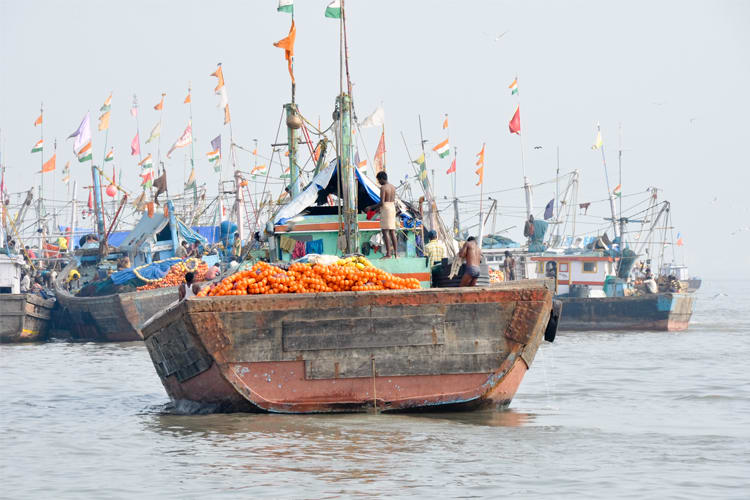
Sirajganj - Chandan Boisha
Today we sail full day further up the river towards the Indo-Bangladesh border that touches the north-eastern region of India. Enjoy breakfast and lunch onboard while viewing the riverine countryside.
Overnight onboard Ganga Vilas.
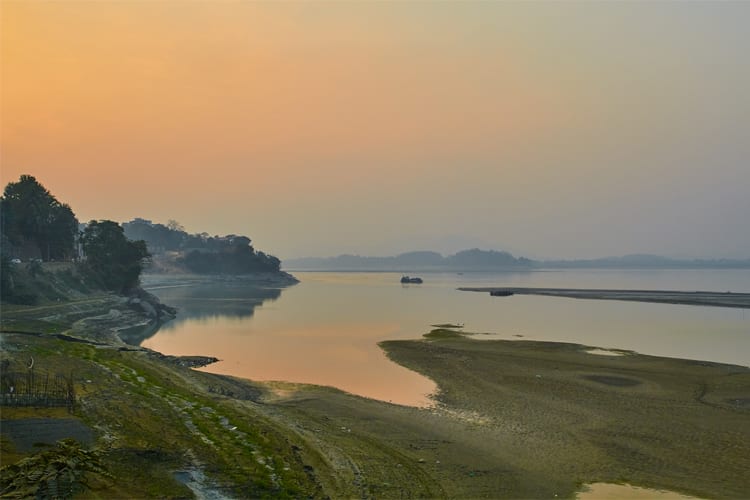
Chandan Boisha - Chilmari
Further sailing brings us to the Chilmari River port, located on a beautiful scenic bank of the Teesta and Jamuna rivers, close to the international border with India. Enjoy breakfast and lunch onboard. Post-lunch immigration & customs formalities of Bangladesh will be done.
Overnight onboard Ganga Vilas.

Chilmari – Rangpur Day Trip
After breakfast, drive to Rangpur (approx. 60 km from Chilmari) one of the largest cities in Bangladesh. Spend the day exploring this “City of Colour.” Visit the domineering Tajhat Palace and Museum, the Dimla Kali Temple, and the Carmichael College. Enjoy lunch at a local restaurant. Return to the ship by evening.
Overnight onboard Ganga Vilas.

Chilmari (Bangladesh) / Dhubri (India)
Today, enjoying breakfast and lunch onboard, we sail upstream crossing the international riverine border to arrive at Dhubri in the State of Assam for Immigrations and Customs of India. Dhubri is an old town on the bank of the mighty Brahmaputra (as the Jamuna River is known on the Indian side).
Overnight onboard Ganga Vilas.
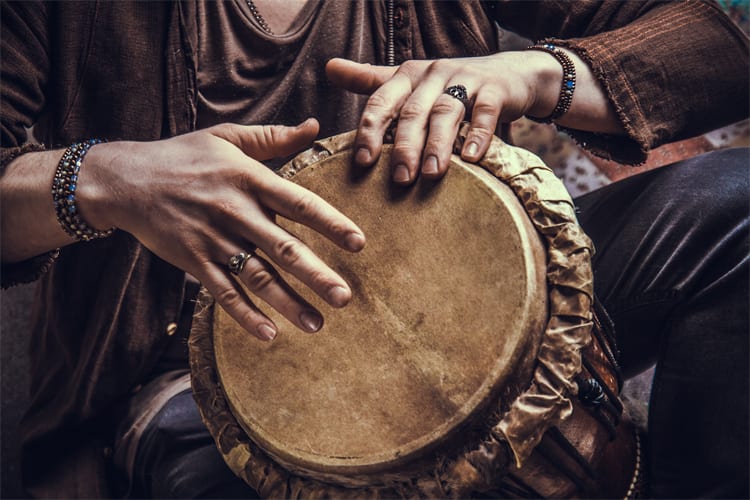
Dhubri – Goalpara
After breakfast explore Dhubri town visiting the Gurdwara (Sikh temple) of Sri Guru Tegh Bahadur Sahib and the nearby pottery village notable for its traditional craft of terracotta. Return to the ship for lunch and sail onward to Goalpara.
Overnight onboard Ganga Vilas.
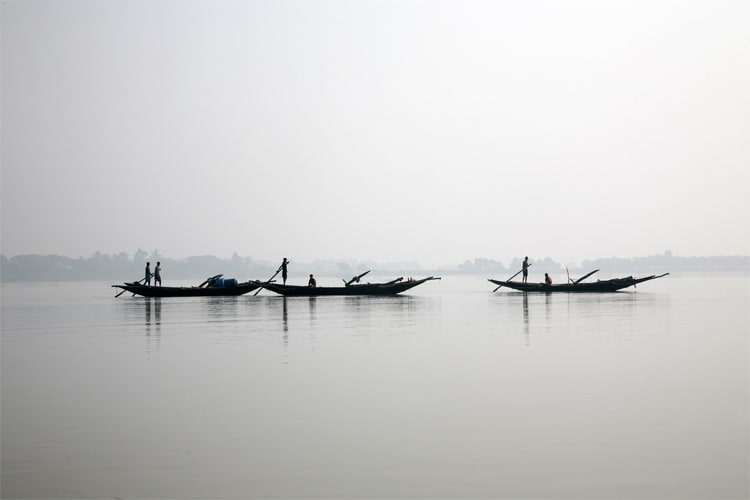
Goalpara – Sualkuchi
After breakfast, we drive to visit Sri Surya Pahar, a significant but relatively unknown archaeological site, which has the distinction of possessing valuable cultural remains of three important religions of India: Buddhism, Jainism and Hinduism as evident from the innumerable sculptures and other relics that were excavated here. Return to the ship for lunch and sail to Sualkuchi, a textile centre fondly called the "Manchester of Assam."
Overnight onboard Ganga Vilas.
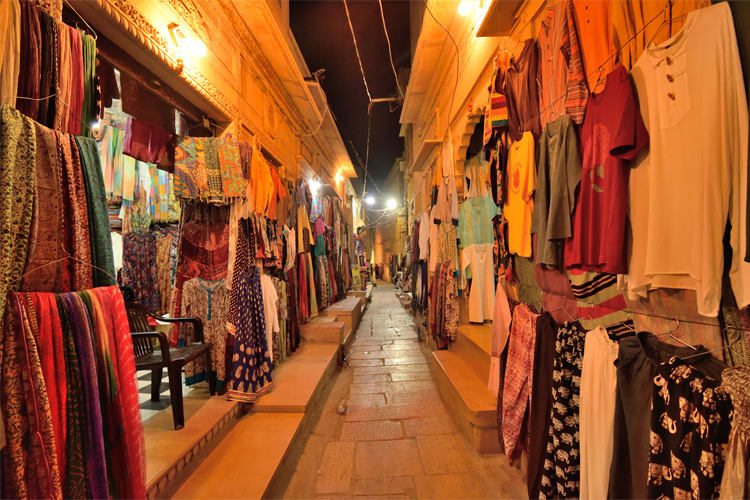
Sualkuchi – Guwahati
After breakfast, we will visit the silk weaving village in Sualkuchi, which is renowned for the Muga silk, a glossy fabric with fine texture and durability. Return to ship for lunch and sail upstream to arrive at the Pandu Port in Guwahati, a major hub of river transport.
Overnight onboard Ganga Vilas.

Guwahati – Mayong
After breakfast proceed to visit the ancient Kamakhya Temple (from outside). Dedicated to the goddess Durga, it is an important pilgrimage destination, especially for tantric worshipers. Also, visit the Assam State Museum. Return to ship for lunch further upstream, anchoring near Mayong.
Overnight onboard Ganga Vilas.
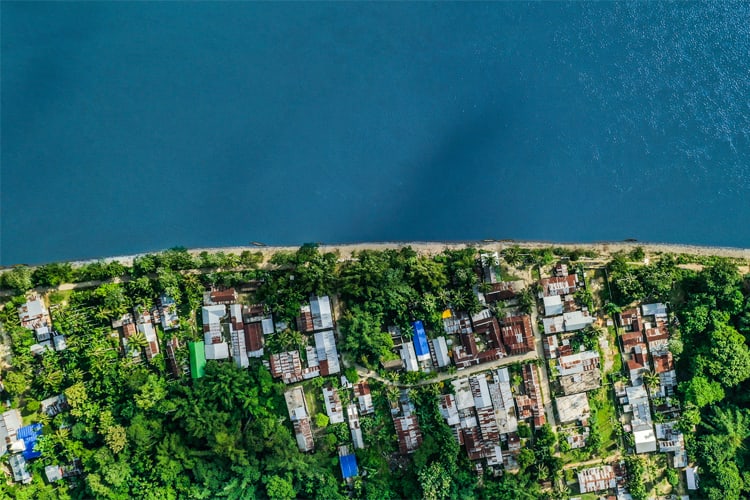
Mayong - Tezpur
We sail further upstream enjoying breakfast and lunch onboard and viewing the riverine countryside along the Brahmaputra River. We arrive by evening at Tezpur, a legendary town whose name translates to the ‘City of Blood,’ a somewhat macabre name, resulting from the legend of Lord Krishna and Lord Shiva waging an epic battle here.
Overnight onboard Ganga Vilas.
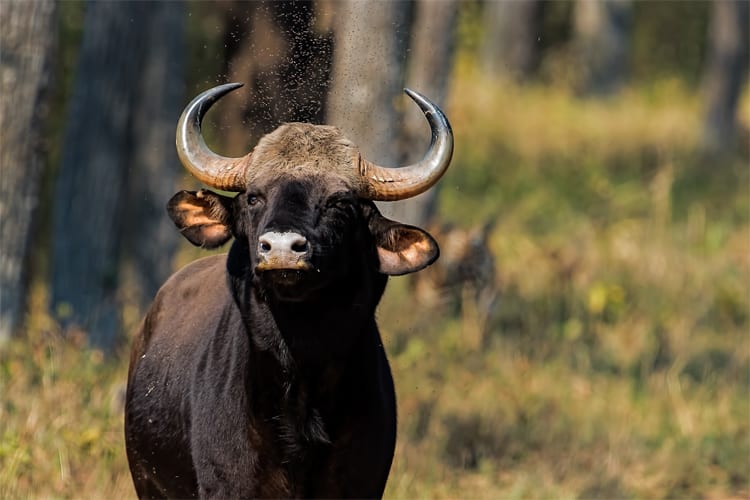
Tezpur - Silghat
After breakfast walk to visit the Cole Park, now called Chitralekha Udyan, a beautiful park established in 1906 by British Deputy Commissioner Mr. Cole. It features two massive ornamented stone pillars and other sculptural remnants of the 9th and 10th centuries. Return to the ship for lunch and sail onward to Silghat.
Overnight onboard Ganga Vilas.
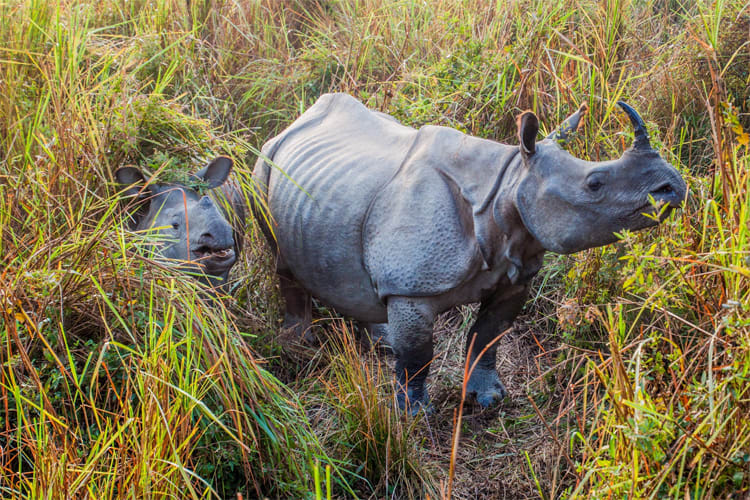
Silghat - Kaziranga Day Trip
Spend the full day in Kaziranga National Park with morning and afternoon jeep safaris with breakfast and lunch at a local restaurant. A World Heritage Site, Kaziranga hosts two-thirds of the world's Indian rhinoceroses and is home to large breeding populations of elephants, wild water buffalo, swamp deer, and the royal Bengal tiger. It is also recognized as an important bird area for the conservation of avifaunal species.
Overnight onboard Ganga Vilas.

Silghat – Biswanath Ghat – Dhansiri Mukh
Enjoying breakfast onboard we sail to Biswanath Ghat, popularly called Gupta Kashi due to the cluster of temples of different Gods, like modern-day Varanasi. Visit the Biswanath temple, located at the confluence of the rivers Bridhaganga and Brahmaputra. Return to the ship for lunch and sail onward to Dhansiri Mukh, the confluence of the rivers Dhansiri and Brahmaputra.
Overnight onboard Ganga Vilas.
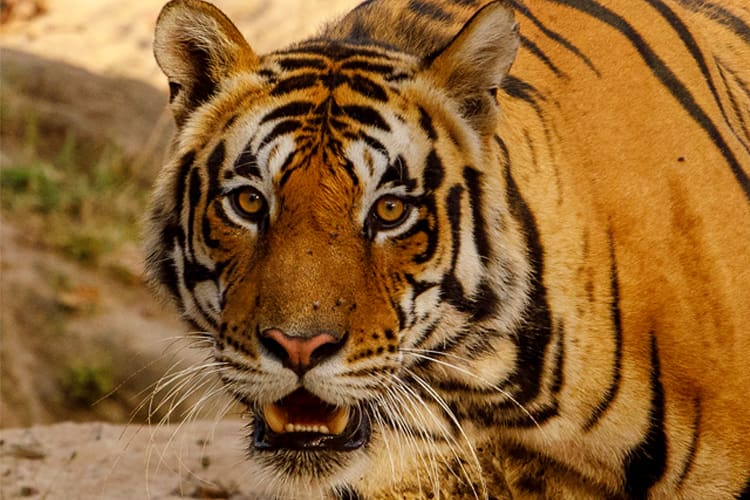
Dhansiri Mukh – Majuli
Today we sail full day upstream enjoying breakfast and lunch onboard and arrive at Majuli, a river island in the Brahmaputra. We arrive by the evening at Majuli, which is the abode of the Assamese neo-Vaishnavite culture.
Overnight onboard Ganga Vilas.
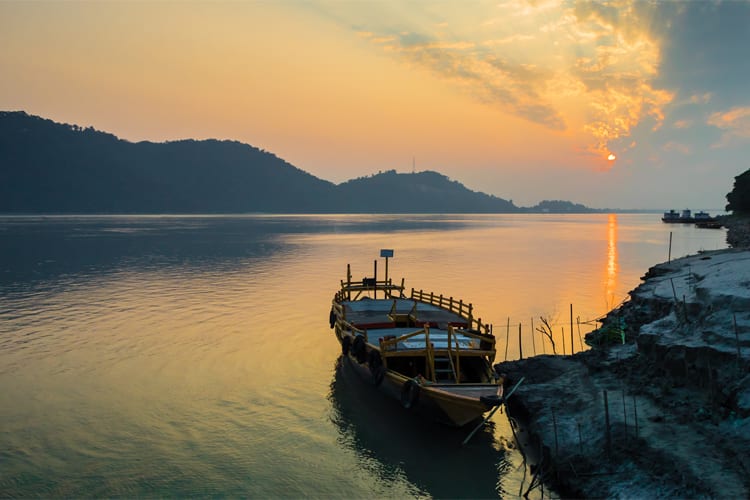
Majuli – Nimati Ghat
After breakfast onboard, visit the two notable satras (monasteries) at Majuli. The Kamalabari Satra is a centre of art, culture, literature, and classical studies on the island; while the Auniati Satra has an extensive assortment of ancient Assamese artefacts, utensils, jewellery, and handicrafts preserved in a museum. Return to the ship for lunch and onward to Nimati Ghat.
Overnight onboard Ganga Vilas.
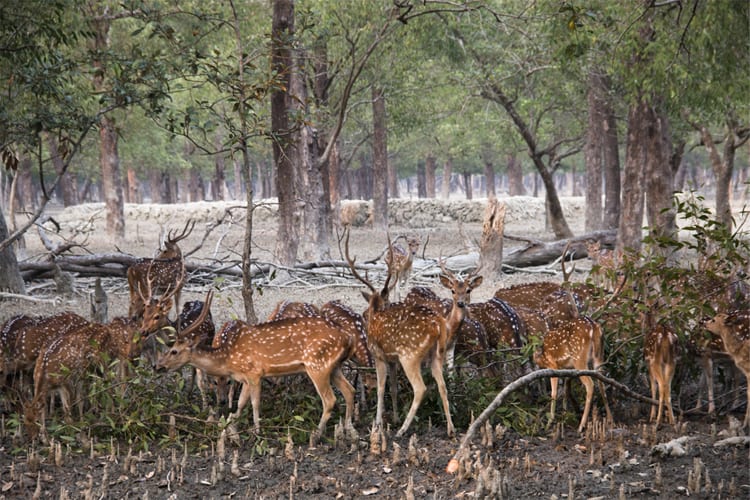
Nimati Ghat – Sibsagar Day Trip
After breakfast set out to explore Sibsagar, which was the capital of the Ahom Kingdom of Assam. The place gets its name from the Sibsagar tank, which translates to “Ocean of Shiv.” Visit the Shiva Dol temple, the Talatal Ghar palace and military base, and Rang Ghar, which was the royal sports pavilion. Return to ship for late lunch.
Overnight onboard Ganga Vilas.
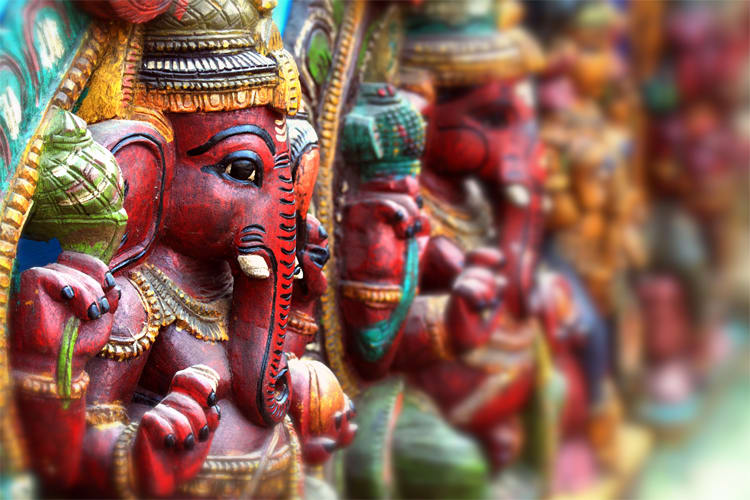
Disembarkation
Following breakfast disembark the ship and transfer to the Dibrugarh airport (approx. 4-hrs drive) for onward journey.
Please note this itinerary is also available in reverse, sailing in the opposite direction from Dibrugarh to Varanasi.
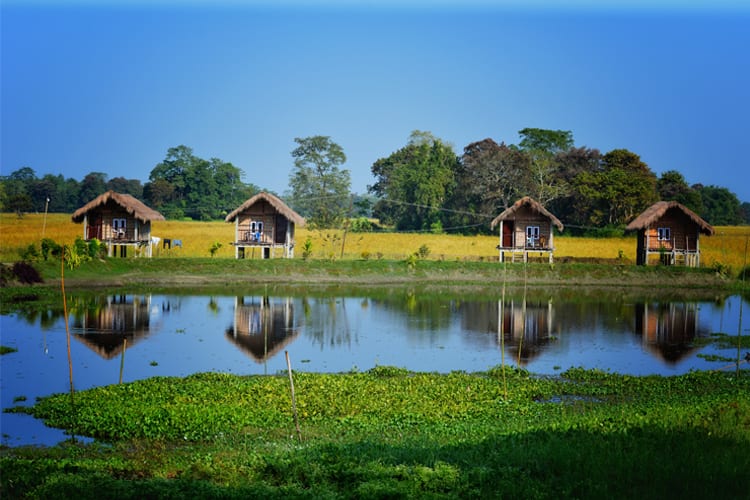
Accommodations
Social Areas
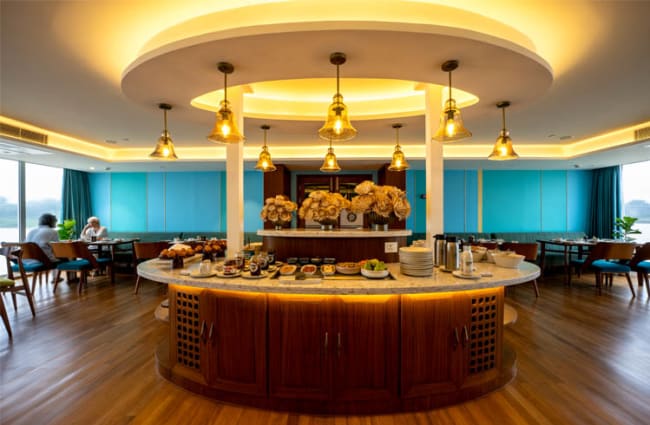








Suites & Cabins


Main Deck Suite
The Ganga Vilas' Main Deck Suites have soothing interiors with dedicated color palettes, and huge floor-to-ceiling panoramic windows and have been delightfully furnished with contemporary and comfortable furniture. Amenities include an ensuite bathroom with shower, seating area with sofa, writing desk, closets, LED TV, safe, smoke detectors, life vest, and sprinklers. Cozy double beds can be converted to twins as desired.


Main Deck Suite Front
Same as The Ganga Vilas' Main Deck Suites, Main Deck Suites Front have soothing interiors with dedicated color palettes, and huge floor-to-ceiling panoramic windows and have been delightfully furnished with contemporary and comfortable furniture. Amenities include an ensuite bathroom with shower, seating area with sofa, writing desk, closets, LED TV, safe, smoke detectors, life vest, and sprinklers. Cozy double beds can be converted to twins as desired.

Upper Deck Suite
Located on Upper Deck, The most luxurious and spacious suite aboard, with 265 sq. ft. of space, the Upper Deck Suite is a haven of luxury. Embellished with Persian rugs, Burma teak floors and rich tapestry, on-demand movie service, and a writing desk. Bathrooms are as luxurious as the room and are fitted with both spacious bathtubs and shower panels.


Upper Deck Suite Front
The most luxurious and spacious suite aboard as the Upper Deck Suite but located at the front of the cruise, with 265 sq. ft. of space, the Upper Deck Suite Front is a haven of luxury. Embellished with Persian rugs, Burma teak floors and rich tapestry, on-demand movie service, and a writing desk. Bathrooms are as luxurious as the room and are fitted with both spacious bathtub and shower panels.
Technical Information
Features
- Air conditioning
- Excercise room
- Massage room
- Lecture room
- WIFI available
- Spa
- Souvenir shop
- Hot showers
- Heating
- Charging areas for electronic equipment
Equipment
- Yoga mats
- Flash lights
- Water canteen/bottle
- Binoculars
- Insect repellent
- Dry Bags/Plastic bags to protect cameras
Related Cruises

- India
Charaidew II
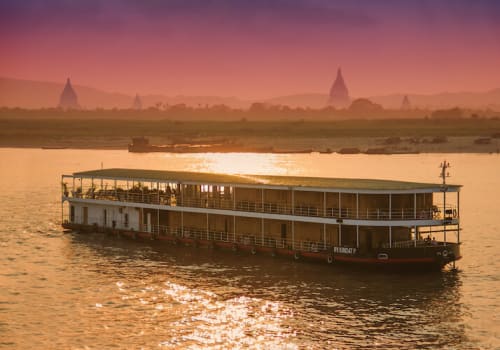
- India
Kindat Pandaw
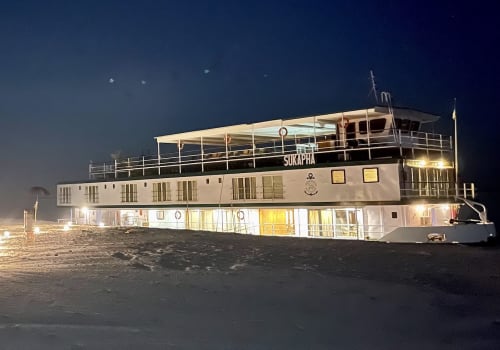
- India
Sukapha
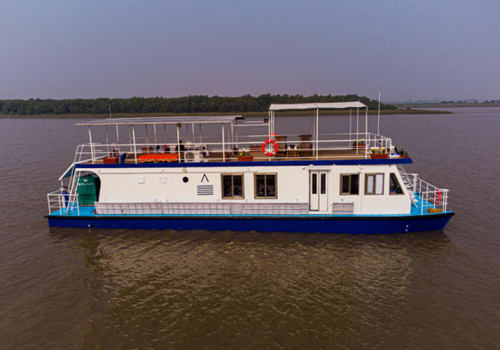
- India
MV Bhitarkanika

- India
Rajmahal
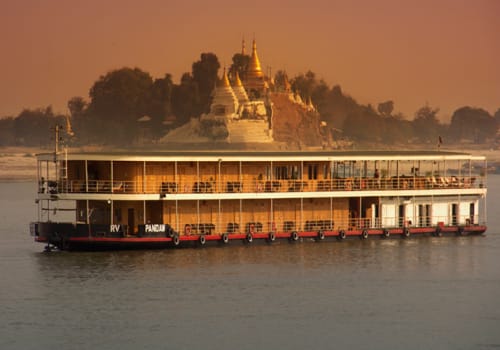
- India
Kalaw Pandaw
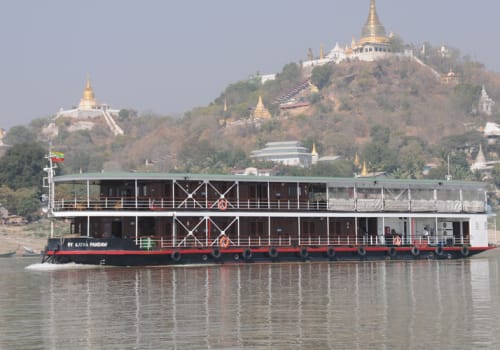
- India
Katha Pandaw

- India
Kochi Pandaw
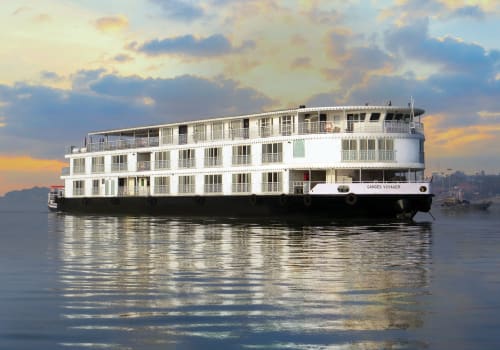
- India
Ganges Voyager
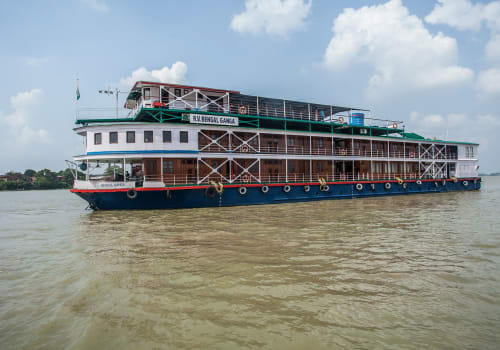
- India


